
Digesting Fragments as Memories: CALLING FOR A BLANKET DANCE
Let me ask you a simple question: What was a significant event in your life? Moreover, how did it impact you, change you, make you into the person you are? What I like most about this question is how it immediately takes us deep into memory. Suddenly a series of memories flood our minds and we rifle through each to determine which might be the most impactful. Now let me switch it on you. What if I asked each of your relatives about the most significant event in your life?
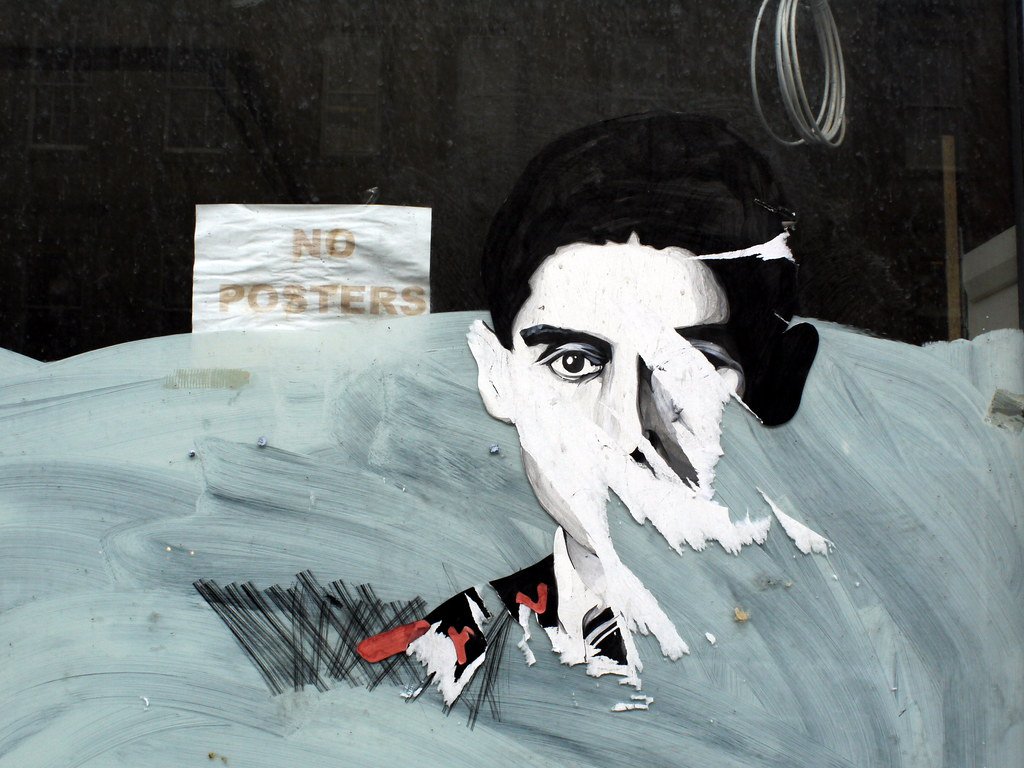
Suddenly, we might have multiple stories. Your grandmother might tell a different story than your grandfather. What about your parents? Your spouse? Your siblings? Your cousins, aunts, uncles? Now we have an entire chorus, a symphony if you will. And in this symphony the music is an ensemble of memory.
“It's enough for me to be sure that you and I exist at this moment.” ― Gabriel García Márquez
One could argue we primarily exist by memory. The memories others have of us. The memories we carry about ourselves. Each moment we share in real time can only be processed in memory. Does this mean there is no here and now? Is memory the only form of existence?
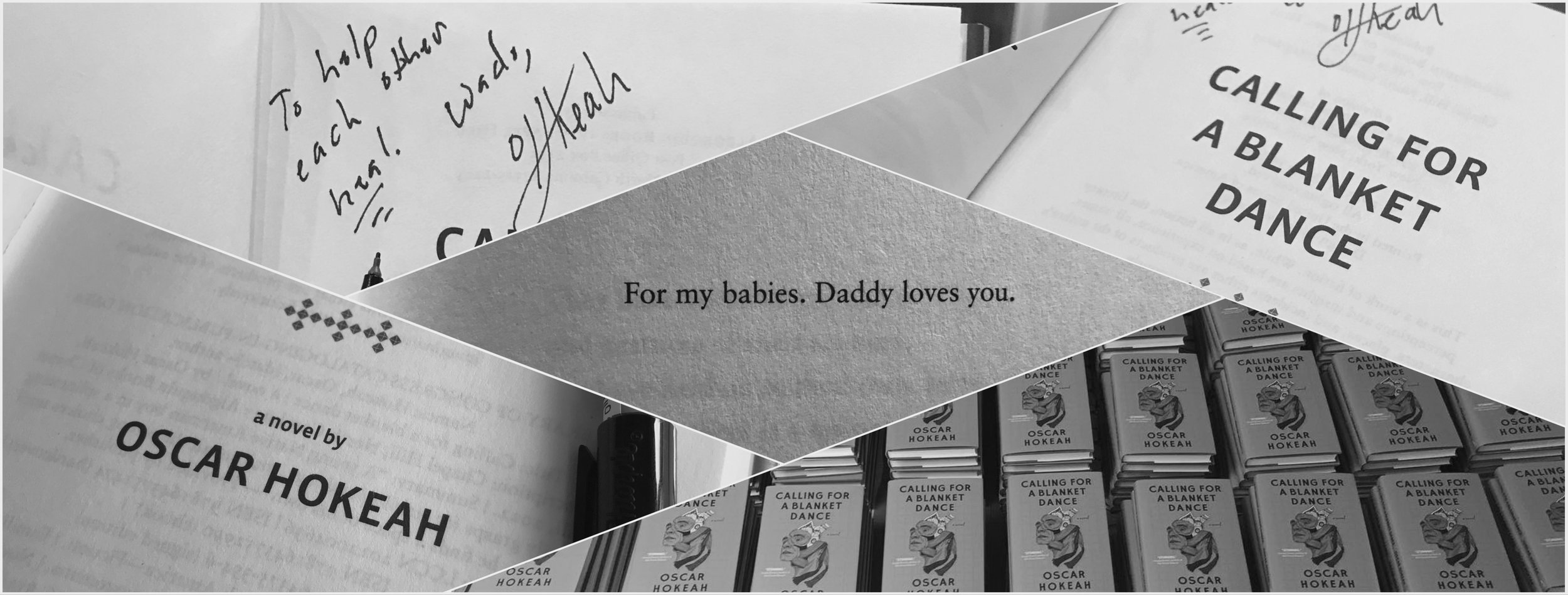
Before I carry on too much longer with all these questions let me say here that my debut novel, CALLING FOR A BLANKET DANCE, allows readers to consider these very questions. The structure of the novel is told by 12 narrators. The main character is Ever Geimausaddle. Each chapter is told by a different family member. We start with his grandmother, Lena, and then move onto his grandfather, Vincent, followed by his uncle, Hayes, and so on and so forth, going through aunties, uncles, cousins, and his sister. Then in the final chapter we hear from Ever himself.
Where the aspect of memory comes into play is the time span between each chapter. Lena tells us a story about when Ever was an infant, while Vincent tells us a story about when his grandson was five years old. Then his uncle follows with one from when Ever was 10 years old. The chapters hop three to five years at a time, and does so into his adulthood, ending when Ever is in his early 30s.
Why would I do this? What's the purpose of spanning so much time between each chapter?
The simple answer: memory. How does our memory work? When I ask you about a significant event, your mind searches for moments in time. It doesn't run in a linear fashion without any breaks from the moment you were born until this very moment. So this begs a bigger question: Do our lives only exist in fragments? If we are simply constructs of memory, how much say do we have in the constructs of our own identity? To my mother, I'm a son, but to my best friend, I'm a brother. In order to truly see into the depths of who we truly are, don't we depend on the memories of others?
“He was still too young to know that the heart's memory eliminates the bad and magnifies the good, and that thanks to this artifice we manage to endure the burden of the past.” ― Gabriel García Márquez
Let the spaces in between each chapter jar you, let them force you into new spaces, let them make you imagine a new version of time--maybe a more honest version of time. Not only will you truly see Ever Geimausaddle as a loving and flawed human being, but you'll forgive yourself for being one too.
“Please — consider me a dream.” ― Franz Kafka
(The image was borrowed from flickr.com)
Debut Novel Cover Reveal Tomorrow!
There I am emailing back and forth with my editor, Kathy Pories, of Algonquin Books about the cover to my debut novel, CALLING FOR A BLANKET DANCE. She let's me know that the Creative Director of Algonquin Books, Christopher Moisan, has found an artist in southwest Texas who does amazing work. He's especially interested in the specific style of art she employs. I quickly click on the attachment they provided. I'm instantly taken by how her work captivates the mind. It's almost like a trap. A beautiful and alluring trap that you never want to leave.
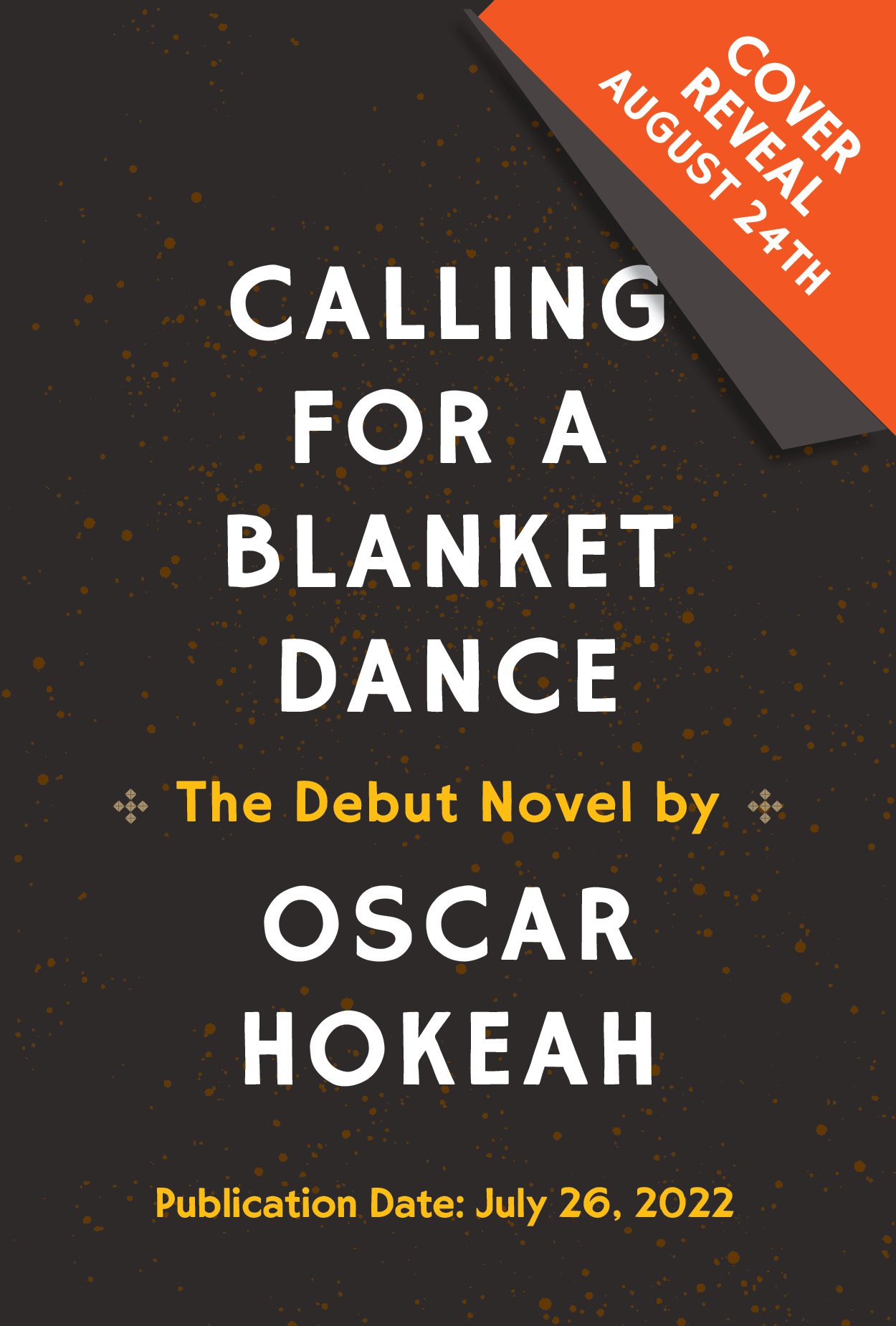
Next thing Christopher reaches out to her to see if she's interested in doing the cover art for the novel. He sends her chapters of the book and we wait patiently. A few weeks pass, and then finally I get the the good news. She's agreed to work with us.
What happens next stuns me. Now I've looked through her website and her Instagram. I know what she's capable of doing as an artist. Her work is well respected by her community and captures dynamics that I had hoped to see in her final piece for the novel. But not only was she able to capture the cultural elements I was hoping, she also made the image come right off the page. All I can tell you is this: this image crawled into my mind the moment I saw it and it has never left. Her ability to lure you into her art is amazing. You'll catch yourself staring, waiting, hoping for the image to go further into your psyche.
And once the image traps you, you'll immediately want to open the book's pages to find more.
The cover reveal happens tomorrow, August 24, 2021, at 2pm Central Time. I can't wait to introduce you to a stunning artist whose work is both radical and enticing.
Self-Imposed Crippling Frustration Under a Wave of Social Justice Advocacy
It was Saturday night when I knew I'd smudge myself and my house with sage the next day. There had been a build up. With the media exposure of police shootings and the new energy for social justice as a response, I was caught up in the energy. But not without personal justification. Under Trump's toxic atmosphere, my beloved Cherokee community quickly became as divisive as the rest of America.

I started to hear comments that I hadn't heard before, and this time from the mouths of racially white Cherokees. What happened? Why were dark skinned and full blood Cherokees so viscerally hated? And all of a sudden?
Well, it wasn't all of a sudden. This divide between full-blood, half-blood, and racially white has been a part of Native communities for a long time. We can go back as far as the initial reservation era of the 1800s. Take Quanah Parker (Comanche) for example, who is depicted in the image above. He was half white and half Comanche. While the Comanche people did not elect Quanah as their spokesperson, the U.S. government made it clear to the tribe that Quanah would be the only person they were going to deal with. So the Comanche chiefs who were elected inside the community were ignored, while Quanah was selected by those in power.
Why do Natives only gain access when we display an allegiance to white supremacy?
It's unfortunate how we can't overcome this history, where race determines power, as opposed to ability, talent, and strength. Ta-Nehisi Coates writes, “But race is the child of racism, not the father.” And we've heard since the 1990s that "race is a social construct." But then again, everything humans do is a social construct, and this particular construct has murdered millions, enslaved millions, and continues to oppress millions today.
So why was I hearing comments? Why were decisions being made that had full blood Cherokees scrambling? All of a sudden I was reminded of my teen years growing up in Tahlequah, when Cherokees were murdered for being Cherokee, when Cherokees talked about the underground culture in hushed tones, and when Cherokees all too often contorted ourselves under the boot heels of white supremacy.
Then as an adult I moved away for a decade.
When I returned to Tahlequah in 2015 I found a very different Cherokee Nation. There were liberal white Cherokees displaying themselves as allies to "identifiable" Cherokees. There was more willingness to engage and the blatant racism that I once encountered had seemed to disappear.
Then Trump was elected.
Slowly there was an erosion. I started to hear more and more underhanded comments about "identifiable" Cherokees, which is a new white supremacist term for targeting anyone who has traditional Cherokee phenotypes: Dark skin, high cheek bones, strong jawlines, narrow eyes. More and more of my racially white peers would say "Indian this" and "Indian that," and I'd think to myself, "I thought you were Indian." But according to the UNSPOKEN racial line, they were not Indian like "identifiable" Indians. Racially white Cherokees were somehow superior. This language grew and grew over the last four years until it reached a point recently where racially white Cherokees were blatantly and openly talking about "Drunk Indians" and how "identifiable" Cherokees were criminals. The tone was etched with superiority, leaving dark skinned and full blood Cherokees feeling like we had no power, like we were being targeted. And you have to understand, the majority of enrolled Cherokees are racially white. It's not a spectrum, not even close. Those of us who live and work here know the truth. "Identifiable" Cherokees are the minority. Cherokee Nation's racial makeup is identical to the U.S. The darker your skin, the harder your life.
I watched full bloods in my circles cower and back down when racist comments were made. Completely silenced. And half-bloods who have a full-blood parent biting their tongues. Some of us have spoken up, but it doesn't come without feeling like we're going to receive retaliation, retaliation for asking people to not say "drunk Indian." Can you believe that? Basic human decency. It's frustrating that we have to beg to be treated like people. It's frustrating that I have to remind folks that we're human beings. Why is it so extreme to have respect reciprocated? Why would I have to say, "I can't breathe," when it should be obvious that racism is a social choke hold?
I started writing this post wanting to write about how I needed to let go of the frustration, how maybe it was crippling me to think about it. More or less, blaming myself. But now? I wonder if racially white Cherokees ever think about crippling their own supposed brothers and sisters? That's what we're supposed to be, right? Brothers and sisters? We all come from "One Fire," right? If so, why do they make comments like their not Native? Why do they limit how many dark skinned Natives get positions of power? Why do they fear dark skin so much that they'll have just one or two "tokens" to keep in their back pockets? If we all come from "One Fire," why did I have to write this fucking post?
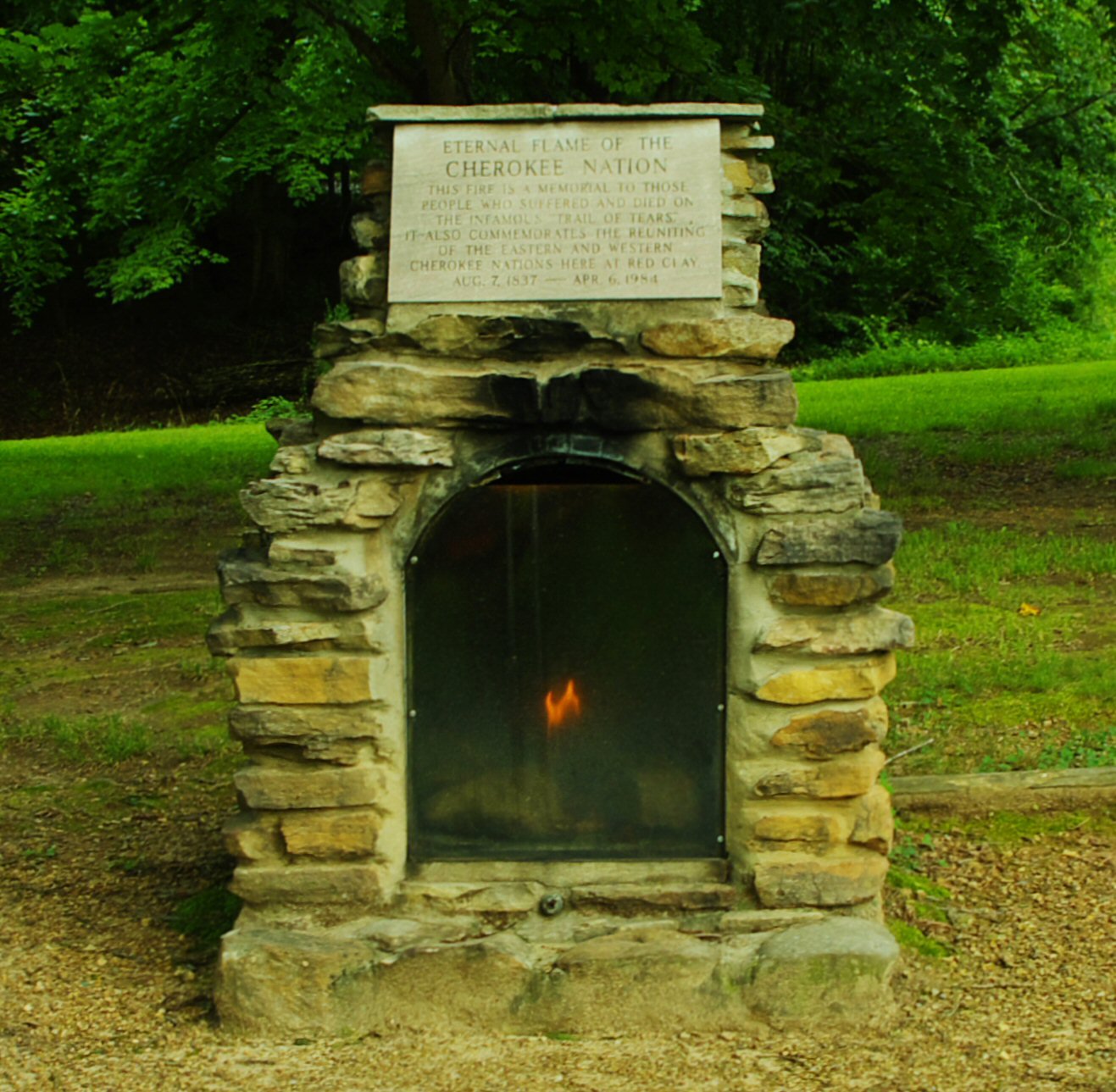
(Images were borrowed from commons wikipedia)
Giving Back: Murrow Indian Children's Home Needing Assistance
I get mentally stuck sometimes, and frustrated, when I think of the disparity rates in the communities I serve. I'm Cherokee and Kiowa. I live in Tahlequah, Oklahoma and work for Indian Child Welfare. I've worked my entire career serving Native communities, working diligently to correct the disparity rates, and every time I see a Native person walking down the street strung out on meth, fidgeting and impulsively picking at their skin (the telltale signs of meth addiction), it breaks my heart. I get frustrated at the disparity rates among Native Americans and see first hand the negative impacts caused by historical trauma.

There is one way to change the disparity rates and that's by giving to a well vetted Native organization, like the Murrow Indian Children's Home in Oklahoma. It's more commonly called the Murrow Home for us locals. They provide care for Native children and are currently in need of specific items. Below you'll find a link to their official Facebook page:
We all want to help and often we don't know how. While I've dedicated my career to working with Native youth, many of us have occupations outside this field but equally want to contribute. My recommendation is to go through the process of vetting Native organizations. Don't wait for a Native person to do so. It can be frustrating for people of color to always have to do the leg work. If I can care enough about Native people that I'll do the work to track down organizations and talk to employees from specific organizations, then I expect anyone could do the same. Not to be harsh, but people of color are not slaves to someone else's enlightenment. Although, when I see a Native organization sending out a call, like the one on the Facebook page above, I'll go out of my way to help them meet their needs.
If you'd like to know more about the Murrow Indian Children's Home here is a link to their website: The Murrow Home. Also, here is a link to their amazon wish list page: Amazon Smile Murrow Home. Additionally, if you'd like to learn more about the history of The Murrow Home here is an article: Cherokee Phoenix Article on The Murrow Home.
I started my career working with a Native group home so my heart is close to helping children in those troubling circumstances. I know what it's like to mentor youth who need stability and safety in their lives, who need a strong role model. The Murrow Home is a rare group home that works specifically with Native youth, including Cherokee children from tribally specific Cherokee communities. If you're in a position to give back, please do so by reaching out to The Murrow Home directly or following one the links above.
(Image above was borrowed from flickr)
Mexican Indian: The Shifting Indigenous Identity of Turtle Island
Call it evolution or enlightenment. Our perspective is broadening. Where we once only had the capacity to see ourselves in strict hyper local terms, now we can access the universal. In fact, both the universal and the hyper local are needed as checks and balances. In the narrow reaches of our identity, people are quick to lock themselves into violent identities--those in need of contention to exist, to be relevant, to matter. It takes a little dialectical thinking to incorporate a universal identity, where we have the intellectual capacity to, simultaneously, know how we are all connected.

Let me give you a little context and my personal ethos.
My father was an immigrant from Chihuahua, Mexico. My mother is a full blood Kiowa/Cherokee from Oklahoma, United States. I am a product of intertribal, multicultural, transnational, and hyper local tribal histories. Oklahoma was once known as Indian Territory and became the world's largest Prisoner of War camp. Chihuahua was once home to 200 tribes before Spanish conquistadors committed genocide to mine silver from the region's mountains.
When I look south of the American border, I remember being five years old and running into the Chihuahua mountains with my cousins to shoot homemade slingshots. I also remember the Indigenous phenotypes of Indigenous ancestors in my cousin's faces. Having been raised in Oklahoma primarily with my Kiowa and Cherokee people, my perspective has always been an Indigenous one--even before I knew the meaning of the word. I rightly assumed all my cousins in Mexico were Indigenous like myself, since we had the same brown skin, narrow eyes, and black hair. The truth expounded by innocence is always convoluted by fragile adults seeking power over people.
The Náhuatl Language in México: http://www.houstonculture.org/mexico/nahuatl.html
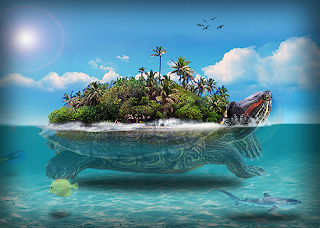
I grew up attending traditional powwows with Kiowa and Comanche people in southern Oklahoma, dancing with my family, wearing bright regalia made by my mother's and aunt's hands. In my youth, we "lived" at the powwow grounds for days at a time. Camping in a tent was as common as sleeping in my bed. While I was one of a few Kiowas with Mexican heritage, we all had the same phenotypes. I didn't look any different from my family, and certainly wasn't treated differently.
Because in my youth I had experiences in Chihuahua, Mexico and experiences in Oklahoma, United States, as an adult the border between Mexico and the U.S. seems arbitrary. Drawn by power seekers and maintained, physically and psychologically, to keep Indigenous people from acknowledging our commonality. Which begs the question, why are colonizers so afraid of Indigenous people allying with each other across Turtle Island?
I'm reminded of the various tribal confederacies in North America who once attempted to unify Indigenous people, and the most famous in the U.S. was Tecumseh's Confederacy (Chief Tecumseh Urges Native Americans to Unite), which ultimately lead to siding with European allies in the struggle for retaining control of traditional lands. Similarly, there were alliances on the Southern Plains of North America, where Kiowas allied with Comanches and held back westward expansion for 100 years (Oklahoma Historical Society). Once they extended their alliance to include the Cheyenne and Arapaho tribes, a confederacy of Indigenous tribes dominated the Southern Plains of North America.
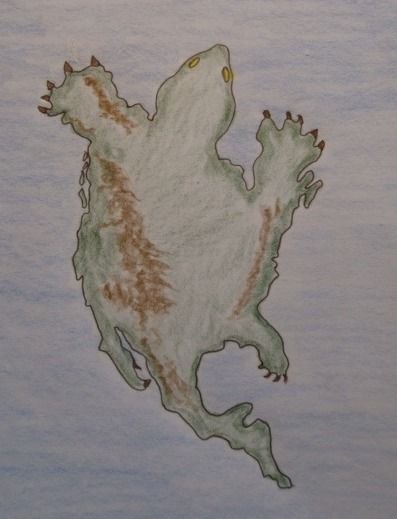
Needless to say, the circumstances that drove Indigenous people in the past are radically different than our need to unify today. Where land base was a primary mode of those alliances, today we are tasked with protecting not only a way of life but more importantly how that way of life is inextricably tied to land based practices. Moreover, to stand against the contamination of earth, air, and water--the three elements needed for human survival. Our plight to unify isn't strictly for the benefit of Indigenous peoples, but for all people to survive and live healthy lives. The environmental war being waged against Indigenous people in Canada is the same war being waged against Indigenous people in Mexico. Whether we're looking north or south, we, as Indigenous people in the United States, have allies in both directions. Why would we limit ourselves to myopic, hyper local identities? Because of a language barrier? Our ancestors developed sign languages to navigate dozens of tribal languages. So we can't beat one colonial language? We're as smart as our ancestors and have the intelligence to know how outdated people lock themselves into identities based in violence. We're smart enough to unfollow and unfriend and silence those seeking to keep Indigenous people from unifying. Outdated practices will only serve to keep Indigenous people fighting with each other, where neo-tribal politics can see the unifying history--how Native people were not only forced to flee into Canada, but to also flee into Mexico.
And now it's time for a return.
(Images were borrowed from The Canadian Encyclopedia, Pinterest, and Facebook.)
For Literary Eyes Only: Budding Archetypes for the Native American Literary Tradition
I'm open minded and enjoy talking to people about their Native ancestry. Folks get comfortable with me when they know I'm not going to judge them for admiring Native people, so they share their family lore. If they're writers, they'll likely mention a project they're working on where they have characters who are Native. Out of respect, they'll ask, "Can you make sure I'm not doing anything offensive?" and ask me to read their work. If I have time in my schedule, I'll gladly do so, but I've been busier than usual over the last year and haven't been able. This is part of the reason why I wanted to construct this list. This article is a serious examination of character archetypes for the purpose of creating literature. A unique approach situated from a Native lens.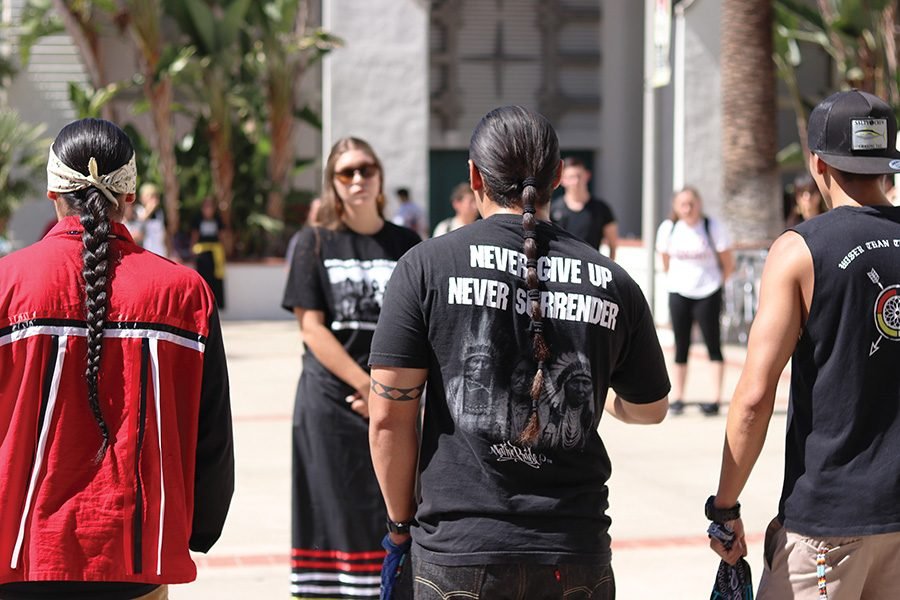 I like reading Native characters in books, and I'm often surprised when one comes up because usually it only happens in books that are specifically about Native people. So when I'm reading an adult fiction book outside that context I don't expect Native characters to arise. As you can tell by this article, I don't have qualms about non-Native writers writing Native characters. I draw the line at exploitation. Meaning, don't pretend to be Native and try to take awards, resources, and space from aspiring Native writers (stealing from the smallest minority in the U.S. is disturbing, and we have the highest disparity rates so it's harmful). The solution is simple: Write as an ally. Everyone wins.I say exercise your creative muscles and write a character who is Native. All writers take a risk when we "create" our characters, especially those who are not our own gender, race, class, or sexual orientation. Which is, more often than folks realize, every time we sit down to write. My line of thinking falls in line with Zadie Smith, who wrote a succinct and brilliant article about the subject, "Fascinated to Presume: In Defense of Fiction." I highly recommend you seek out her article in The New York Review of Books before you presumptuously make uneducated remarks in the comments section below.Another reason I'm motivated to create this list of archetypes has to do with Native literature itself (and I'm not going to get into the debate about "Native Lit" as a category or not--I think having our own category keeps the exploiters in check). The growing number of Native people writing literature has grown exponentially over the last decade. More and more of us are ready to step up and fill this "unmet demand" for Native American Literature. Readers are fascinated by our unique experience, and I feel they are seeking to "remake" their identity, or reconstruct it into one that's less destructive. I'd like to offer readers the opportunity to reflect on their identity by engaging with our own. And if I can do my part to make the world a less hostile place, then I've done something beneficial for not only my children but future generations, who are tasked with one choice: carry our trauma or carry our healing.
I like reading Native characters in books, and I'm often surprised when one comes up because usually it only happens in books that are specifically about Native people. So when I'm reading an adult fiction book outside that context I don't expect Native characters to arise. As you can tell by this article, I don't have qualms about non-Native writers writing Native characters. I draw the line at exploitation. Meaning, don't pretend to be Native and try to take awards, resources, and space from aspiring Native writers (stealing from the smallest minority in the U.S. is disturbing, and we have the highest disparity rates so it's harmful). The solution is simple: Write as an ally. Everyone wins.I say exercise your creative muscles and write a character who is Native. All writers take a risk when we "create" our characters, especially those who are not our own gender, race, class, or sexual orientation. Which is, more often than folks realize, every time we sit down to write. My line of thinking falls in line with Zadie Smith, who wrote a succinct and brilliant article about the subject, "Fascinated to Presume: In Defense of Fiction." I highly recommend you seek out her article in The New York Review of Books before you presumptuously make uneducated remarks in the comments section below.Another reason I'm motivated to create this list of archetypes has to do with Native literature itself (and I'm not going to get into the debate about "Native Lit" as a category or not--I think having our own category keeps the exploiters in check). The growing number of Native people writing literature has grown exponentially over the last decade. More and more of us are ready to step up and fill this "unmet demand" for Native American Literature. Readers are fascinated by our unique experience, and I feel they are seeking to "remake" their identity, or reconstruct it into one that's less destructive. I'd like to offer readers the opportunity to reflect on their identity by engaging with our own. And if I can do my part to make the world a less hostile place, then I've done something beneficial for not only my children but future generations, who are tasked with one choice: carry our trauma or carry our healing.
Mixed Blood In'din
I'm going to start with this one because I fall into this category and can speak to it quite effectively, lol. You'll see this archetype in just about every book written by a Native author. The most recent is Tommy Orange's novel, There There. I highly recommend picking up this book for a contemporary examination of mixed blood heritage in an urban American environment. It hits the mark in every way. But there are a number of writers who speak to a mixed heritage motif, such as Louise Erdrich, Brandon Hobson, and Susan Power. All of whom I would recommend.So what should we consider when writing a Native character of mixed heritage. From personal experience, being half Native and half Latinx, I've not had the self-hatred for being mixed, but that's a popular way of presenting this identity. It's true that mixed bloods often run into discrimination for "not being In'din enough," but I've run into the romanticization for being half Latinx more often than the discrimination. Often I'm seen as an anomaly and people are fascinated by the story of my Kiowa/Cherokee mother, who is from Oklahoma, United States, meeting my father, who immigrated from Chihuahua, Mexico. Typically, people want to know more.I'm only one of a very few Natives from my generation who are half Latinx. I'll say this, though. I live in Tahlequah, Oklahoma (in the heart of Cherokee Nation and work for Cherokee Nation) and there are many Mexican people who have married into Cherokee communities. I work with Indian Child Welfare and I can say undoubtedly that the next generation of Cherokees will have a high number of citizens who are part Mexican.As you'll read in many contemporary stories and many personal narratives online the mixed blood or half blood narrative is one wrought with postmodern dysphoria. Because of being constantly misidentified, people begin to look in the mirror and become dysphoric about what they see. This is where the self-loathing comes in. There seems to be an inability to "own" the diversity in ones lineage so this leads to confusion. The mix blood will suppress and even ignore the part of themselves that is White, Black, Mexican, etc. and instead attempt to only claim Native ancestry. As you can presume, this creates a host of issues, such as becoming over righteous or asserting themselves as an Indian "expert." In this modern era, your character might always try to be seen with full bloods or take pictures with full bloods to post on social media. There's a subconscious desire to be included as a "full blood" by association.
Super In'din
On the surface, this sounds like someone who might be a champion for Native communities. And I'm sure if you asked this guy he'd agree with you, lol. But the "Super In'din" is someone who weaponizes culture. This would be someone who considers himself an "expert" on his culture but he's not truly holding culture the way an elder might hold it. Meaning, he's not trying to pass on his knowledge and wisdom to the next generation. He's more interested in the power his knowledge holds. For character development, it might be better to view this person as a "gatekeeper" rather than an elder.In order to write this character, you're going to need some tribally specific knowledge for him to throw around. And I keep using the gender "he/him" because typically this is a male character--not to say the character couldn't be female, but typically this type of weaponized ego is a patriarchal trait. The most common behavior of a Super In'din is to shame people. So your character could criticize other characters for saying a word wrong or maybe wearing regalia in the wrong way. Your character will have a snobbish demeanor about him and think he's better than everyone. The only time you'll see him submit is when an elder walks into the room. Then he'll cower to the person who holds a more "respectable" way of carrying cultural knowledge.Ultimately, the Super In'din does more damage to his tribal community than he does good. It's better to see him as an extension of the colonizer. Meaning, he's oppressing his own people and doing the dirty work for the colonizer, like a pet. This is how a colonizer has reach into the center of a tribal community. The Super In'din is the colonizer's only way to penetrate the center. Otherwise, a tribal community would be able to heal internally if these individuals didn't exist. But where there is opportunity for power, people will play. So the Super In'din shames and humiliates his own people at every turn for self-fulfillment (hyper individualism).
Born Again In'din
The Born Again In'din could be confused with the Super In'din but there is a major distinction. The Born Again In'din wants to share her knowledge--not weaponize it. So this character will come into tribal culture at a time in their lives when they needed healing. Many recovering addicts become Born Again In'dins, especially if they start attending Native American Church (NAC) as a part of their recovery, which is common. But the Born Again In'din can also be an urban Native who comes to the reservation and gets swept away in learning tribal culture. In about a year, the urban Native will think they're more Native than the reservation Natives, if we're going to use cultural knowledge as a measuring stick.Your character will be overly excited to talk about cultural practices, like speaking the language. They'll start volunteering to say prayers at events. They want to show people how "In'din" they are. This is different than the Super In'din. It's better to see the Born Again as almost evangelical. They're not trying to convert people, but they hold tribal knowledge in such high esteem that they are certain it's going to help others.Here are two common everyday comparisons: If you had a friend who started martial arts and then became completely immersed to the point where all they talked about was martial arts, or if a friend started a new job that was interesting and new and they seemed to only talk about work. This is a similar pattern for the Born Again In'din.To capture this character effectively, you'll also need to have some cultural knowledge, but this person will know everything there is to know about medicinal plants in a specific region. So they'll say things like, "There's a cave outside Pumpkin Hallow where mushrooms grow just right," and they'll proceed to tell you at what phase of the moon when you should harvest said mushrooms. They know their medicinal roots and how to turn them into medicine. Also, they'll be in the process of learning the language. In fact, that's where they'll start. They'll be gungho about tribal language and use it as often as they can. This is where the Super In'din can shame the Born Again by constantly pointing out where their wrong, which can be often because they are in effect "students" of their own culture and are trying to gain more knowledge.The fruition of this character usually happens in one of two ways. They can become like the Super In'din themselves and start shaming other Natives. Or they can become a "savior" type and espouse wisdom to help the community.
Activist In'din
The Activist In'din has garnered some new attention with the rise of the #NODAPL movement, and now we have numerous protests around the world where protectors are standing up for ecosystems. But this archetype began in the 1970s with the rise of the American Indian Movement (AIM). In fact, AIM has maintained its presence since those early years and are the foundation for this current wave of activists. If not for AIM, then the current identity of "eco protectors" would not exist.Activist In'dins are our elite intellectual fighting force. It's better to see them as being more like a special forces unit, like Seal Team Six of the U.S. Navy. In fact, many of its members are veterans. If you're writing one of these characters, you're not going to see them very often. You might hear about them. But they are always serving as a protector at one of the many protests. They'll engage fully at one movement and when the protest is dismantled, then they'll move to another. In the flux, this character might show up in one of your stories, unless your story is about a specific protest. But when they show up, they'll be there for only a short time before they're off to the next eco protest.Behaviorally, your character will know the legal system. Activist In'dins have been arrested dozens if not hundreds of times, depending on their age, and can name their rights at the drop of a hat. Similarly, they'll introduce themselves as a Prisoner of War, saying, "My name is Oscar Hokeah, Gkoi'gkoo/Tsa'la'gi, slave/prisoner of Indian Territory/Oklahoma forcibly relocated by the Medicine Lodge Treaty of 1867 and the Treaty of New Echota of 1835." Not only are they historians but experts on specific treaties that affected their tribe.You can draw your characters as having a military type of personality. If you've had relatives in the military, then you can borrow from their demeanor. They tend to be very serious and ready to argue. Many of these individuals come from Law School and will spend a period of their young life at protests before they move on to budding careers as tribal lawyers. I'd describe these characters as being ready to serve. If you need something done, your Activist In'din character will be the first to volunteer to do it.
Hipster In'din
I saved the best for last. The Hipster In'din is the newest archetype and started showing itself about ten years ago. Image became god with the rise of social media, and these guys love themselves more than their mommas ever could. Lol, I'm teasing. Kinda. But the Hipster In'din is very concerned about trends and will jump onto the latest. If the trend is a Native protest against a pipeline, then they'll routinely post their personal opinions on social media. As soon as the trend changes to the protest of a mountain, so will their tweets. These guys are selling a product and that product is themselves. But this archetype is a global archetype so we all know someone like this. I'm just putting this into a Native context.Behaviorally, the latest trend is to be cynical so cynicism is the language of the Hipster In'din, but it's a special brand of cynicism. First you have to say something very sincere and when real human emotions surface you stuff them back down with a cynical comment, like, "Trump wants to start a race war, but at least I have my coffee," and then laugh. Your Hipster In'din character will need to be seen at trendy locations or trendy events. It'll all come through via social media. The major distinction will be the need to hold a certain "image." And the clothes will match the cynical language.The Hipster In'din character will carry themselves like they don't really care about anything or they are so disconnected that no one can hurt them. They are too cool to care. It can come off as arrogant, but it's an arrogance that's not fooling anyone. Other people in your story will be able to see it as a protective quality. The cynicism and arrogance is a way to hide from the pain of the world. Which will in turn make them appear to be even more fragile than if they were genuine.
Closing Thoughts
The above archetypes are found not only in contemporary Native American literature but also in modern Native society. They are the budding archetypes of our generation. My intention behind the list is to offer Native writers and non-Native writers character traits when developing their storylines. Discussions about literary archetypes, such as the hero, the villain, and the victim are common in literary classrooms, but we writers also consider the birth of new societal archetypes, such as the jock, the prom queen, and the nerd, which are then transferred into literary devices for writers. In the same vein, I offer the above archetypes as a nuanced approach to the literary tradition.
(Image borrowed from The Daily Aztec)
The 12 Year Journey of Unsettled Between
I spend a lot of time thinking about love, and what I'm about to discuss here is in the vein of love. But a love for cohesiveness, a love that desires modalities in cooperation rather than competition. Certainly, it took the very pessimistic concepts around Baudrillard's philosophy to engender my thoughts on this subject. But without Baudrillard I would've never reached this conclusive ending: competition is a mere copy of a copy. I hear you asking "So then what's the original source?" My answer: inspiration.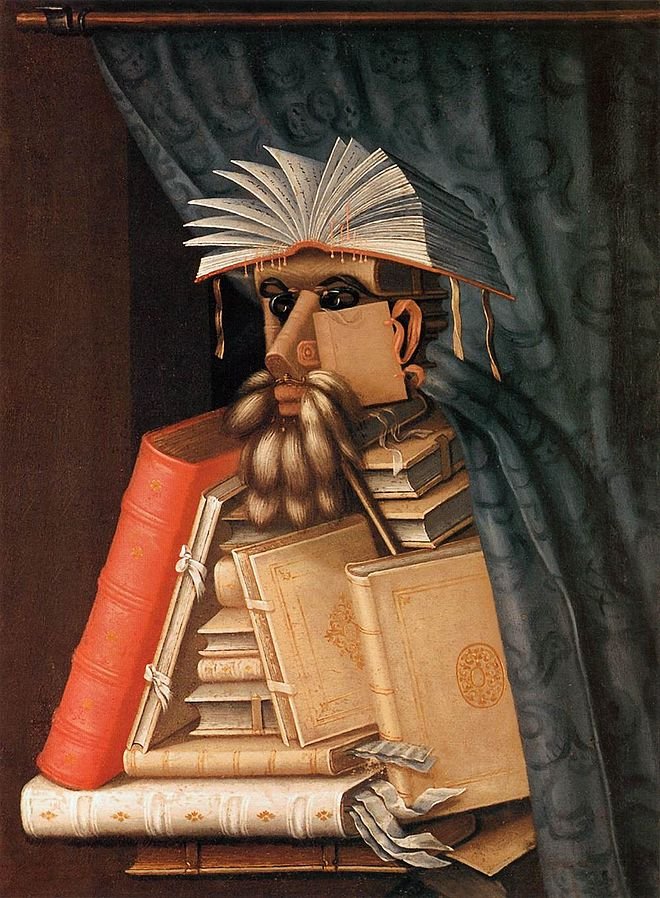 I've spent the last 14 months adding to and then revising a novel. It jumped from approximately 30,000 words to 73,000 words inside of a few short months. Then came all the revisions. I dove into each story and read and reread sentence after sentence, smoothing out the edges and slicing deeper details. Unsettled Between has changed dramatically and in the most beautiful ways. The thematic concept is much cleaner. The stories are further developed. The characters have richer personalities--all the characters--whether static or dynamic. And how was I able to alter a few stories into a full length novel? Inspiration.I'm going to be real honest here. Before I found representation for my novel, I had lost a great deal of inspiration. As many writers can in the ups and downs of life. I had written a couple of the stories in Unsettled Between from 2008 to 2010. They were published in journals ("Our Day" in American Short Fiction and "Time Like Masks" in South Dakota Review"). It was enough to give me a surge of inspiration. Success, even modest success, can give a writer enough fuel to burn for a full length novel.I sent one of the stories to Oxford American, which is a journal I dream of getting published with, and the editor turned it down but he wrote a little note in the corner saying something to effect of "Please submit more fiction in the future. I enjoyed your story," and this little note gave me additional inspiration to continue. So I completed a few more stories, and then a few more, and soon I had enough stories to call this a novel. But it was weak. It needed a lot of development.
I've spent the last 14 months adding to and then revising a novel. It jumped from approximately 30,000 words to 73,000 words inside of a few short months. Then came all the revisions. I dove into each story and read and reread sentence after sentence, smoothing out the edges and slicing deeper details. Unsettled Between has changed dramatically and in the most beautiful ways. The thematic concept is much cleaner. The stories are further developed. The characters have richer personalities--all the characters--whether static or dynamic. And how was I able to alter a few stories into a full length novel? Inspiration.I'm going to be real honest here. Before I found representation for my novel, I had lost a great deal of inspiration. As many writers can in the ups and downs of life. I had written a couple of the stories in Unsettled Between from 2008 to 2010. They were published in journals ("Our Day" in American Short Fiction and "Time Like Masks" in South Dakota Review"). It was enough to give me a surge of inspiration. Success, even modest success, can give a writer enough fuel to burn for a full length novel.I sent one of the stories to Oxford American, which is a journal I dream of getting published with, and the editor turned it down but he wrote a little note in the corner saying something to effect of "Please submit more fiction in the future. I enjoyed your story," and this little note gave me additional inspiration to continue. So I completed a few more stories, and then a few more, and soon I had enough stories to call this a novel. But it was weak. It needed a lot of development. 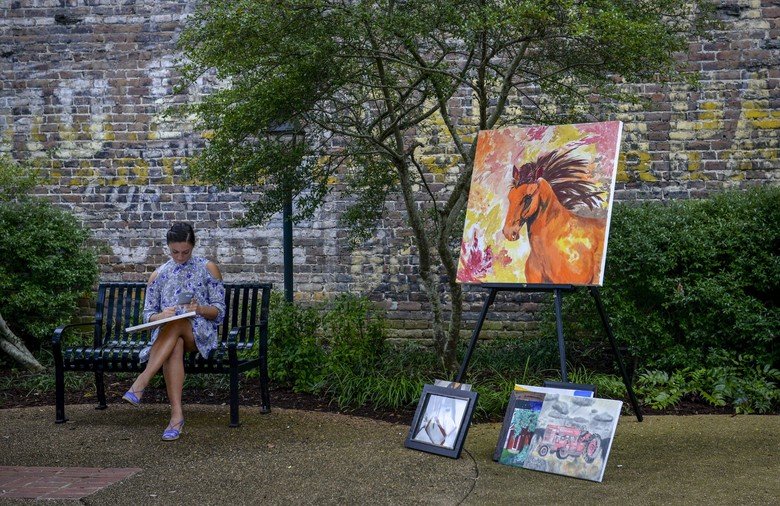 It was 2012 and I wanted some type of success. I needed inspiration. I knew if I could get someone to grab onto my book I'd have renewed energy. So I started sending out queries and got a request for a partial but the agent never even gave me a "No, thank you." The request came quickly in my querying process so I stopped sending out queries, which turned out to be a mistake. The agent never returned my email. And I emailed a few times asking for updates. But nothing. I was young in my career and took this as a defeat. In hindsight, I should've just kept querying. I hadn't submitted to very many agents. But I was naive and new to the game. I was defeated, or felt defeated, like maybe giving up was the only option. Soon I stopped carrying around my laptop and I forgot about the flash drives.A few years passed. I got divorced. Moved back to Oklahoma. Started raising my kids as a single parent. Life swept in like a tornado and carried me into a version of myself I didn't recognize.
It was 2012 and I wanted some type of success. I needed inspiration. I knew if I could get someone to grab onto my book I'd have renewed energy. So I started sending out queries and got a request for a partial but the agent never even gave me a "No, thank you." The request came quickly in my querying process so I stopped sending out queries, which turned out to be a mistake. The agent never returned my email. And I emailed a few times asking for updates. But nothing. I was young in my career and took this as a defeat. In hindsight, I should've just kept querying. I hadn't submitted to very many agents. But I was naive and new to the game. I was defeated, or felt defeated, like maybe giving up was the only option. Soon I stopped carrying around my laptop and I forgot about the flash drives.A few years passed. I got divorced. Moved back to Oklahoma. Started raising my kids as a single parent. Life swept in like a tornado and carried me into a version of myself I didn't recognize.
“When I sit down to write a book, I do not say to myself, ‘I am going to produce a work of art.’ I write it because there is some lie that I want to expose, some fact to which I want to draw attention, and my initial concern is to get a hearing.” — George Orwell
Then in 2015, I got this idea for a novel. Not the collection of stories I had written. Those stories I couldn't even look at. In fact, I couldn't even slide the flash drive with those stories into a USB. There was something psychological keeping me from going back. I told myself I needed to move forward. Keep thinking positive. So I wrote another novel, Uncle Called Him Spider. You can find posts on this blog where I work out kinks in the storyline. But this new idea was enough to get me believing I was a writer again. 60,000 words later. I had no doubt.So being in awe of my accomplishment. Writing 60,000 words is heavy lifting and it took me about six months to complete the first draft. Then I started the revisions and deepening the novel. After a year I had a solid "draft" of Uncle Called Him Spider. It was solid enough to call a draft and had interlaced subplots with protagonist and antagonist battling for top spot in a very esoteric field. It was different. I hadn't read a novel like it before so it left me feeling good about my hard work.
“There are no laws for the novel. There never have been, nor can there ever be.” — Doris Lessing
So late 2017 and early 2018, I start thinking about those stories. I'm like, "Maybe I should try to reread a few of them." Then a friend asked if I was working on any fiction. I told him about the new novel, but in the back of my mind I thought about those stories. His very considerate and thoughtful question was a springboard. Suddenly, I started thinking about the collection of stories again.I decided to try to slide a "certain" flash drive into a USB. And it worked. After reading the collection, I suddenly had a new vision for the book. So most of the stories were booted. They either didn't fit into this new concept or I felt like they just weren't good enough. So I wrote new stories. Then I polished them to a point where they were more than solid. They were ready to be published in journals. But my earlier defeat left me too frail to consider putting myself on the line. I couldn't handle the rejection, or the repeated rejection. Maybe one or two. But the dozens it can take to get a story published was going to be too much.
“If it sounds like writing, I rewrite it.” — Elmore Leonard
Then I heard of this event on Twitter. It was called #Dvpit (Diverse Voice Pitch) event. It was a simple but brilliant concept. You developed a twitter sized pitch of your novel. On the day of the event, you post the tweet. If an agent clicks on the heart icon, then you send them their requested material. I thought, this isn't nearly as brutal as the traditional querying process. I told myself, "It's a one time pitch," as opposed to the numerous I was visualizing. More importantly, it avoided the numerous rejections. Plus, it was new, different, and I got a little excited about it. So I marked it on my calendar and wrote a pitch. I polished over several weeks, reading and rereading until it was tight and succinct.I was surprised when multiple agents from large literary agencies started clicking on my tweet. What I liked most was how this pitching event gave me a sense that I was on the right track. It gave me inspiration. Long story short, I landed an agent. I couldn't believe my luck. The excitement carried over into the revision process. I was so beyond inspired that when my agent asked me to more than double the novel, I did so in a few short months. It almost felt easy. Likely because I was inspired by the success of working with an agent and speaking with someone who cared as much about my novel as I did.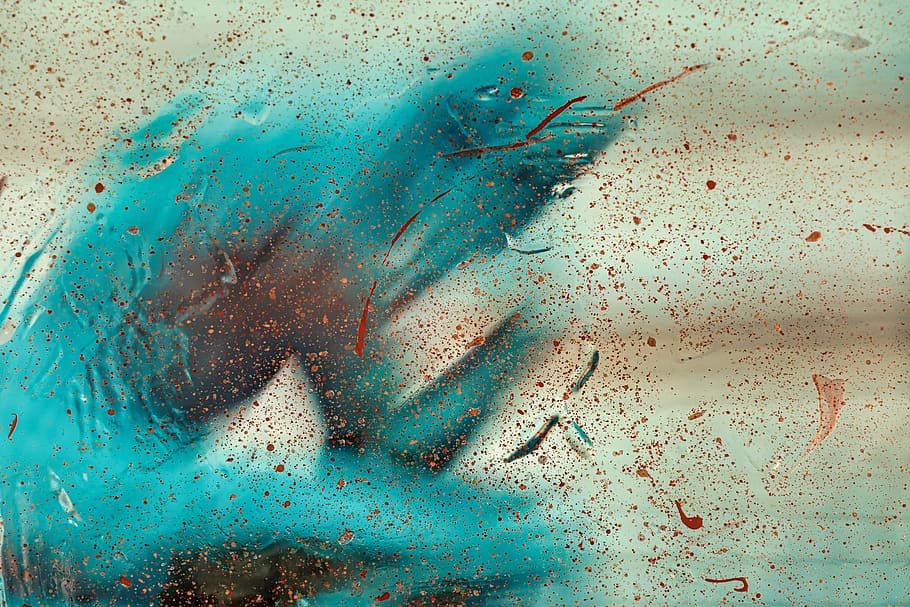 I can't tell you how lucky I am to be working with my agent, Allie Levick. I highly recommend querying her if you have a full manuscript to offer. As I reflect back on the last 14 months, she has asked me to look at specific pieces of the story in new ways. She's very hands on with the development and cares a lot about her work. I have high standards when it comes to professionalism. Allie carries herself as a true professional and I highly respect her opinion. A good agent will offer creative feedback, but one steeped in the rigors of her profession will inspire.So over the last few weeks, as I disappeared into revision work, I've thought a lot about things, like Baudrillard and love, cohesion and cooperation. I've seen people using "competition" to work themselves up. But I find inspiration to be the most impacting on art and life. In fact, from the competitiveness I've witnessed, I can see how inspired people energize themselves and the uninspired feed off the inspiration of others. Competition is only a fading copy of inspiration. Personally, I simply seek out inspiration or wait for it and trust it'll find its way toward me. Then once my spirit has risen with its power, I hold onto it as long as I can.
I can't tell you how lucky I am to be working with my agent, Allie Levick. I highly recommend querying her if you have a full manuscript to offer. As I reflect back on the last 14 months, she has asked me to look at specific pieces of the story in new ways. She's very hands on with the development and cares a lot about her work. I have high standards when it comes to professionalism. Allie carries herself as a true professional and I highly respect her opinion. A good agent will offer creative feedback, but one steeped in the rigors of her profession will inspire.So over the last few weeks, as I disappeared into revision work, I've thought a lot about things, like Baudrillard and love, cohesion and cooperation. I've seen people using "competition" to work themselves up. But I find inspiration to be the most impacting on art and life. In fact, from the competitiveness I've witnessed, I can see how inspired people energize themselves and the uninspired feed off the inspiration of others. Competition is only a fading copy of inspiration. Personally, I simply seek out inspiration or wait for it and trust it'll find its way toward me. Then once my spirit has risen with its power, I hold onto it as long as I can.
Support a Native owned Etsy shop, Allies United, where I offer unique merch for allies of social justice movements, like MMIW, Native Lives Matter and Black Lives Matter. Take a look inside my Etsy shop here: etsy.com/shop/AlliesUnited.
(Images were borrowed from wikipedia, columbus,af.mil, and pxfuel)
A Call to Gurus
This article is a confession to my gurus. Well, maybe more of an apology. Or a humble request for forgiveness. Okay, it's a mixture of all three. Sometimes I can be an asshole. More so when I was younger and before life kicked my sorry brown ass into submission. People say they love writers who have had the life beaten out of them. That'll be my remaining solace in this whole matter: I'm only likable after bruises on the side of the face and a gash near the hairline.
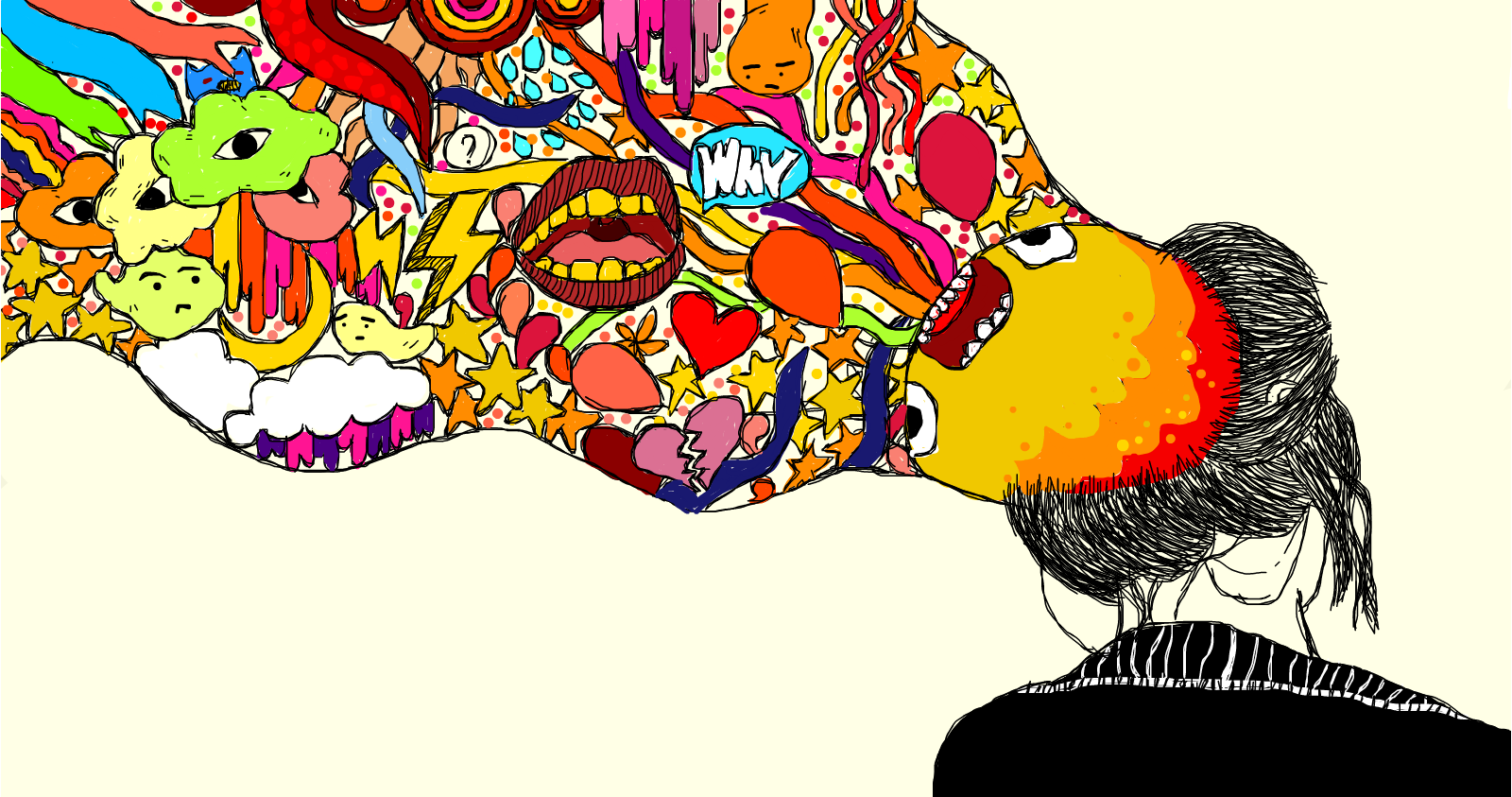
I was eight years old when I got into my first major argument with a teacher. I could've been seven, but I was young. In elementary school. What was the argument about? Or what passion could be evoked in an eight year old child that would set him off? It wasn't the obvious, like video games, food, or toys. It was spiders. Yup, the whole argument was about spiders. My stance was that spiders were evil. Yes, evil. My teacher kindly tried to enlighten me about the role of spiders in the cosmos. But I wouldn't hear it! "No! Spiders are evil!" I told her. And thus began my attack on gurus.
I'm a peace loving person, despite what we've seen so far from my eight-year-old self's stance on spiders (and, interestingly enough, my childhood nickname was Spider and family on my Kiowa side still call me Spider).
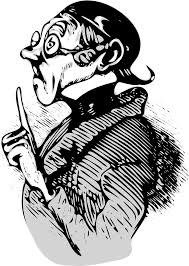 But when it came to teachers I've always had an odd and subtle defiance. But before we get too far into this business, you'll want to know what triggered me to write this article. I had an email exchange with someone who rightly pointed that I needed to make things right, that I had a history, going back lifetimes, where I insulted teachers and this was hurting my ability to grow as a person. There was nothing I could say in return. She was right. She hit the proverbial nail on the head, leaving me speechless.
But when it came to teachers I've always had an odd and subtle defiance. But before we get too far into this business, you'll want to know what triggered me to write this article. I had an email exchange with someone who rightly pointed that I needed to make things right, that I had a history, going back lifetimes, where I insulted teachers and this was hurting my ability to grow as a person. There was nothing I could say in return. She was right. She hit the proverbial nail on the head, leaving me speechless.
This has extended into my adulthood and it runs so subconsciously that I recently inserted an attack on a teacher in a recent article: From Tommy Orange to the Institute of American Indian Arts: Plains Tribes Battle for “Powwow” Terminology in Contemporary America. What's wrong with me? I didn't name any names and wouldn't anyway, but to see this play out as recently as last week is astonishing.
“I am not a teacher, but an awakener.” -- Robert Frost
Certainly, while I was at the Institute of American Indian Arts I was a pain in the ass. My professors are nice to me about it all. I was young and they're forgiving (thankfully). But this affected me to such a degree that this morning I started emailing all my old instructors. One after the other. I told them how much I appreciated their guidance and apologized for being an idiot. Time is the best teacher of all, and time says to appreciate people while they're in front of me. But yes, I emailed numerous teachers this morning. All but one has emailed back so far, and each were appreciative that I reached out (some I hadn't spoken to in nearly a decade).
“Teaching is the greatest act of optimism.” -- Colleen Wilcox
I wish I could find all the teachers I transgressed (and yes it was that many). If push comes to shove, I will. But I figured at minimum I should contact the ones I still had access to and then write this article. Let's call it a start. No one is perfect, certainly, and likely my missteps may have not been to a severe degree, but ultimately that's not up to me to decide. I transgressed and I should apologize. Simple, straightforward, and honest. I know it's not okay (no matter how I justified the actions). Teachers put their wisdom on the line when they offer guidance to their students. So I shouldn't have been so callous.
Support a Native owned Etsy shop, Allies United, where I offer unique merch for allies of social justice movements, like MMIW, Native Lives Matter and Black Lives Matter. Take a look inside my Etsy shop here: etsy.com/shop/AlliesUnited.
How to Smudge with Sage & Native American Customs for Prayer
I've had several people inquire about practices and customs associated with smudging. I decided to cleanse myself today so I thought I'd make a short video on rituals I've learned over the years. This is by no means anything dogmatic. These are just methods that I've learned over the years. I'm Kiowa and Cherokee, and I've incorporated practices between both cultures and lessons I've learned personally through doing this routinely that work for me.I hope you enjoy the video. Please feel free to share with as many folks as you like, and if you have questions reach out to me in the comments. Wa'do, have a blessed day, and if you're interested in Native American fiction please support my debut novel, CALLING FOR A BLANKET DANCE: Bookshop, Amazon, B&N, IndieBound.https://www.youtube.com/watch?v=Z3GGFIfJY0Q
Novel DNA: How Writing Chapters can Change the World
What to do with a great idea? Let's sit down and map out a novel. Writing in the dark is a popular way of writing short stories. We get an idea. We pull out the laptop. We write until everything is on the page. As we write, we don't know where the story will lead and this suspense and feeling of surprise keeps us writing, it builds adrenaline, and keeps us guessing as we finish a story. But there may need to be a different approach when it comes to a 25 chapter novel.
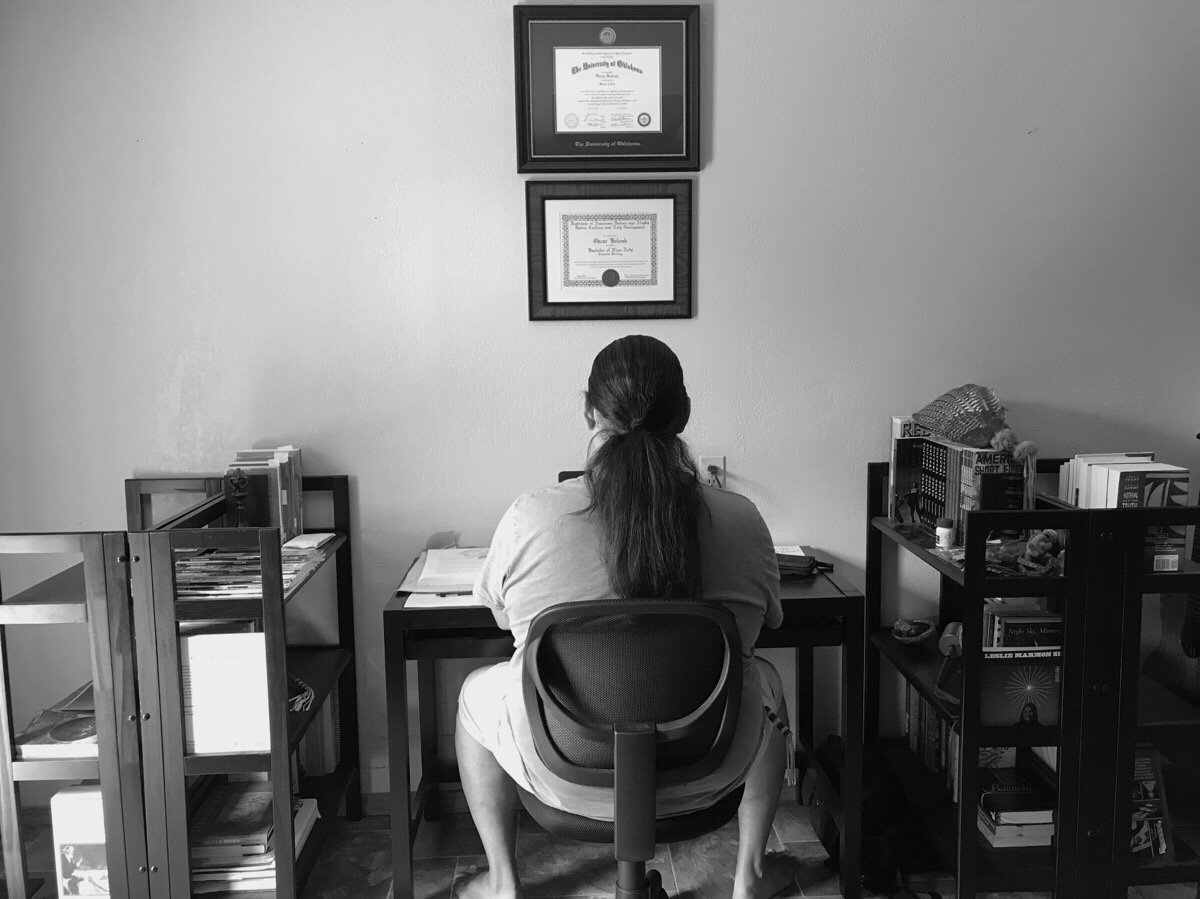
I'm not going to tell anyone how to write. We all have our nuanced approach. But what I'm going to do is share with you how I go about writing my novels. And where novel writing can be different and similar to short story writing. We've all gotten to the point where we've asked ourselves: How do I write a novel? Do I outline? If so, how do I outline multiple chapters to create an interesting story arch? Do I write in the dark for 80,000 words? If so, will my novel have deadly and boring lulls?
Do a little cross compare with my approach and fill in with your personal style. Make the process your own. That's one of the important components to any creative approach.
First thing I do: Create a OneNote file. The tabs work great to create space for each individual chapter. I always have a "development" tab, where I create multiple pages for subjects like characters, plot, subplots, story arch, etc. But I create a tab for each chapter so I can brainstorm elements within each chapter. What I need to consider for one chapter is not going to work for another. If there is a clear build up and tension to the novel, then every chapter will need a lot of space to create the nuances.
Example: If the main character is taking a child into custody in the first chapter, then I'll need space to brainstorm her approach, which will be determined by the other characters confronting her and how she will overcome that confrontation. This is radically different than the second chapter, where the main character might be confronting a whole different situation, like children adjusting to a new foster home.
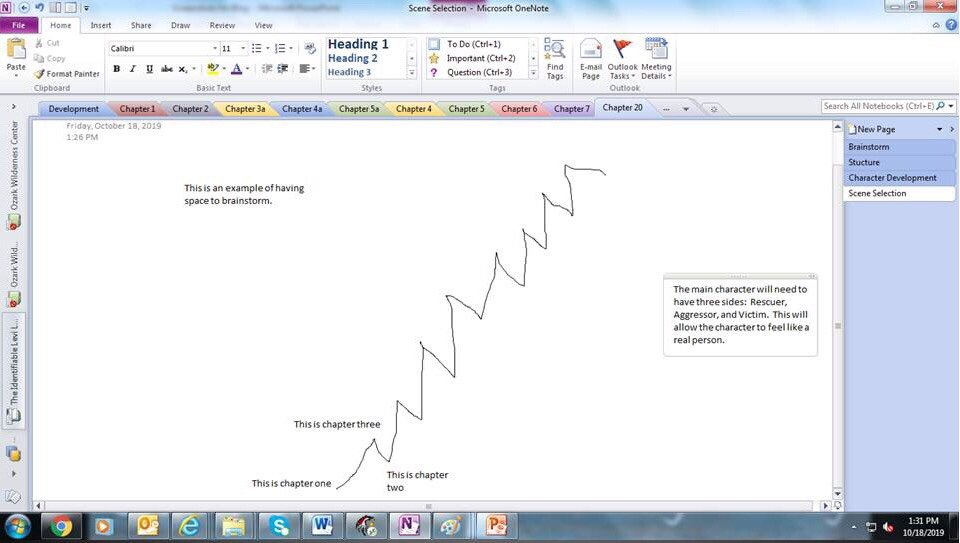
Also, I like to have all the tools in OneNote. I can draw out the build up as you can see in the image above. I can also write text boxes for each idea I need to address for development. I can also move those boxes around.
So once I have the space established to develop my novel, I then go into writing a "synopsis" of sorts. It's a line by line breakdown of the novel. It's not a full synopsis by any sorts but it gives me a quick snapshot of the progression of the main character's obstacles. Also it gives me an opportunity to consider subplots. In a novel, it's important to establish subplots that mirror or give us a break from the main story line.
Example: If the main character is a young man who is trying to overthrow his corrupt boss, then the reader will need to take a break from the ugliness transposed between the two. We can see him with his family and his family gives him stress relief as he battles with this boss, but it will simultaneously show the family putting pressure on him to be successful at work. The subplot shows a different side to this young man, and it also adds to the tension while giving the reader an alternate storyline to follow.
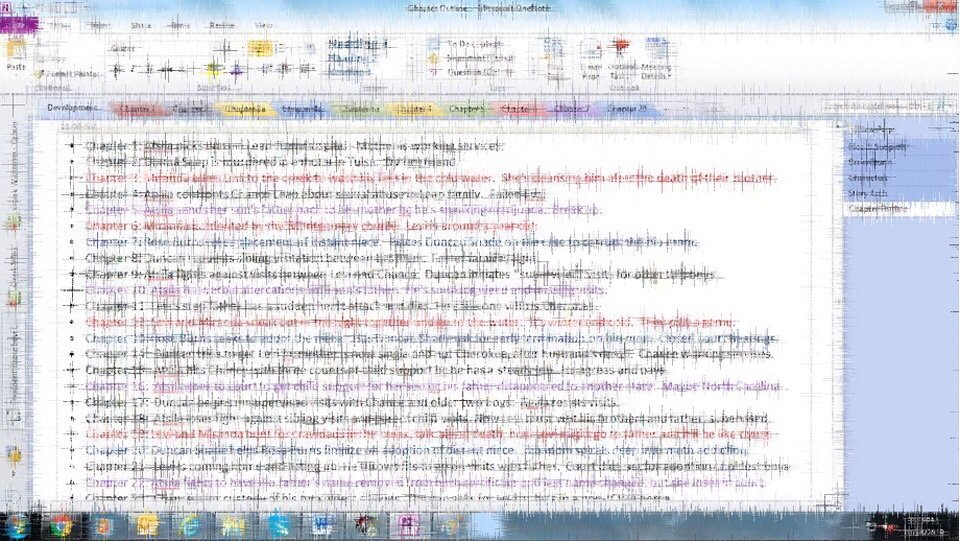
So I had to "shear" the screen because the above image is a screenshot from the current novel I'm working on. I don't want to give away any details in the novel before it reaches fruition. But as you can see in the above image, it shows a "list" of each chapter from chapter one to chapter 25. I'd also like for you to notice the different colors on each line. There are chapter breakdowns in black, red, blue, and purple. The black represents the main plot line, the red is a tightly related subplot (a subplot closely aligned with the main plot), while the blue and purple are subplots that show a seperate but nuanced mirror to the main plot (gives the reader an emotional "break" from the plot while also increasing tension).
You're probably asking why I go to such lengths to map out my novels. For me the pleasure of writing isn't only in the initial creation of a piece. I like the practice of "writing in the dark" when it comes to short stories. But when we're trying to hold someone's attention for a long period of time, there needs to be numerous components to keep the reader entertained. This is the reason I write. For other people to have as much pleasure reading the novel as I had creating it. When it's two fold, we as writers get more in return because then we have happy fans who are eager to talk about and share our writing. In order to reach that goal, there is a lot of layers to create.
I enjoy the macro development as much as the micro. As I create the big picture, outlining chapter by chapter how the main character will survive all the obstacles I throw in her way, the concept building can be euphoric. It's a physical reaction. After I've written the first draft and I'm finally ready for the details (the micro), I'm getting adrenaline from witnessing the spirit of the novel come alive in the words. Suddenly, my idea that corruption can be beaten becomes emotionally tangible when the main character throws a fist full of contracts into an evil boss's face. It all comes together.
There is nothing more exciting than seeing the DNA of a novel build word by word into a complex living system. And it takes hard mental labor to structure a story so perfectly that someone can read your work and suddenly choose to transform their worldview to include people you know and experiences you've lived. To make that connection, it's worth all the time, thought, and energy spent.
Support a Native owned Etsy shop, Allies United, where I offer unique merch for allies of social justice movements, like MMIW, Native Lives Matter and Black Lives Matter. Take a look inside my Etsy shop here: etsy.com/shop/AlliesUnited.
Story Like Bonsai are Reborn through Deadlines & Transformations
Like clipping and pruning back branches on a bonsai tree. Then we wire and train those branches to spread in the appearance of organic design reflective of the natural environment, taking careful consideration and steady hands. We have to make the right decisions. I've been revising Unsettled Between over the last two months and it's been a transformative process not only for the novel but for me as well.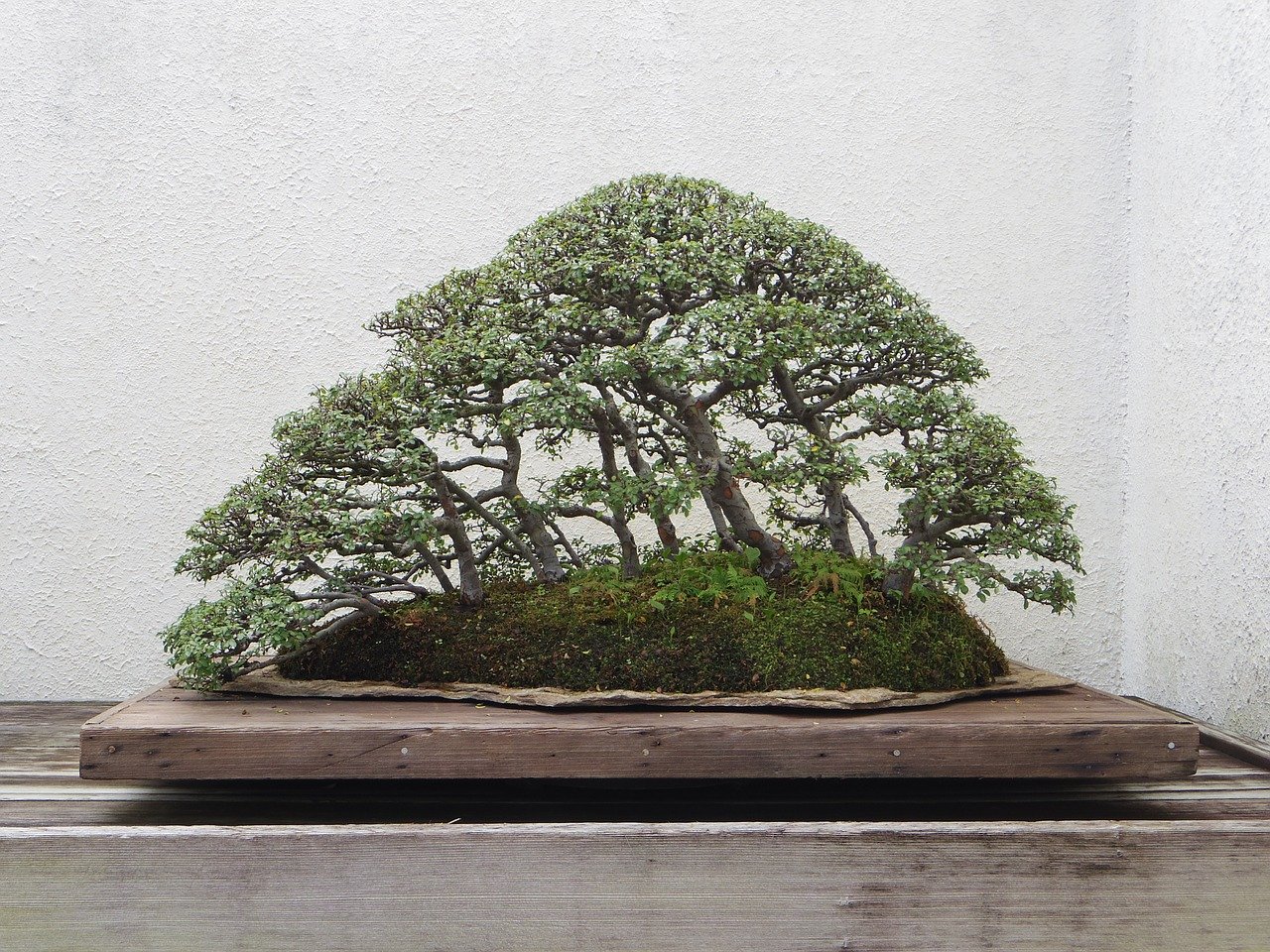 Writers get the pleasure of constant reflection, taking what's occurred in our own life and looking for material. I've always used my personal experiences to write fiction. There is no better way to draw unique and resonate stories. When I have a personal investment in the story, I tend to write with more intensity. This transfers well to the reader. They get more emotion and have a stronger connection to the characters. When I can relate to a character, whether this is in likeable or unlikable ways, I tend to be more interested to know how the story will turn out.I'm reminded of Alice Munro's short story, Child's Play. The main character is terribly unlikable. She's bitterly judgmental and cold. Then ultimately she commits the worst act imaginable. I've read this story at least two dozen times, and I shake my head every time I come to the ending. Munro expertly develops a character who I simultaneously hate and for some reason: I can't turn away. I have to read to the last word. And it pays off.Then I wonder if this character's personality is reflective of someone in Munro's life. Where did she get the inspiration to draw such a character?I turned in revisions for my novel, Unsettled Between, today. Today was the deadline. And I love deadlines. And I love feedback. Like cultivating bonsai, feedback and deadlines give me the shape and inspiration to complete a naturally flowing design for a novel.
Writers get the pleasure of constant reflection, taking what's occurred in our own life and looking for material. I've always used my personal experiences to write fiction. There is no better way to draw unique and resonate stories. When I have a personal investment in the story, I tend to write with more intensity. This transfers well to the reader. They get more emotion and have a stronger connection to the characters. When I can relate to a character, whether this is in likeable or unlikable ways, I tend to be more interested to know how the story will turn out.I'm reminded of Alice Munro's short story, Child's Play. The main character is terribly unlikable. She's bitterly judgmental and cold. Then ultimately she commits the worst act imaginable. I've read this story at least two dozen times, and I shake my head every time I come to the ending. Munro expertly develops a character who I simultaneously hate and for some reason: I can't turn away. I have to read to the last word. And it pays off.Then I wonder if this character's personality is reflective of someone in Munro's life. Where did she get the inspiration to draw such a character?I turned in revisions for my novel, Unsettled Between, today. Today was the deadline. And I love deadlines. And I love feedback. Like cultivating bonsai, feedback and deadlines give me the shape and inspiration to complete a naturally flowing design for a novel.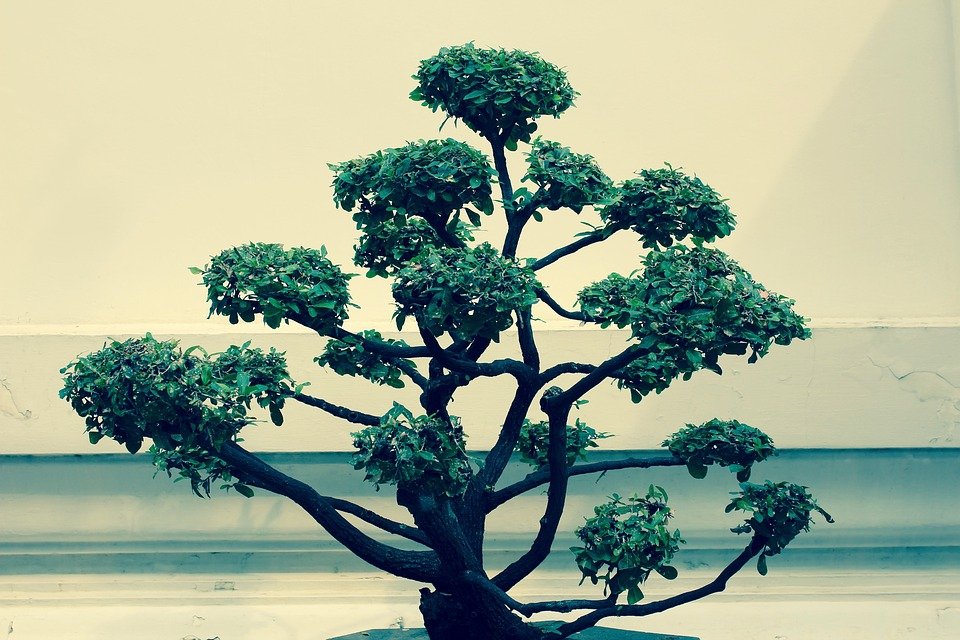 And like anything worth doing, I learned something new about myself during this round of revisions. Or maybe it was a remembering. That I can't force anything. The first month, July, I had such a hard time. I needed to replot my opening chapter so in essence it was going to become a different story, like making a tree into a bonsai--transformation was needed. It all came out and I was very pleased with the outcome, but the story seemed to want to do things on it's own timeline. The story told me what it wanted. I didn't tell it. This was something I knew--to allow the story to shape itself--but there was a part of me that wanted to force things to happen. And I was beat back everytime I tried.Once I let go, the story wrote itself. It was organic. The branches grew toward the sun and it became a much more pleasing process. Certainly, I pruned and trimmed and clipped a few leaves here and there. What bonsai enthusiast wouldn't? What writer wouldn't? But I worked with the structure rather than forcing it. The two main characters, protagonist and antagonist, battled it out and wrote the story for me. I simply sat back and watched the story manifest.
And like anything worth doing, I learned something new about myself during this round of revisions. Or maybe it was a remembering. That I can't force anything. The first month, July, I had such a hard time. I needed to replot my opening chapter so in essence it was going to become a different story, like making a tree into a bonsai--transformation was needed. It all came out and I was very pleased with the outcome, but the story seemed to want to do things on it's own timeline. The story told me what it wanted. I didn't tell it. This was something I knew--to allow the story to shape itself--but there was a part of me that wanted to force things to happen. And I was beat back everytime I tried.Once I let go, the story wrote itself. It was organic. The branches grew toward the sun and it became a much more pleasing process. Certainly, I pruned and trimmed and clipped a few leaves here and there. What bonsai enthusiast wouldn't? What writer wouldn't? But I worked with the structure rather than forcing it. The two main characters, protagonist and antagonist, battled it out and wrote the story for me. I simply sat back and watched the story manifest.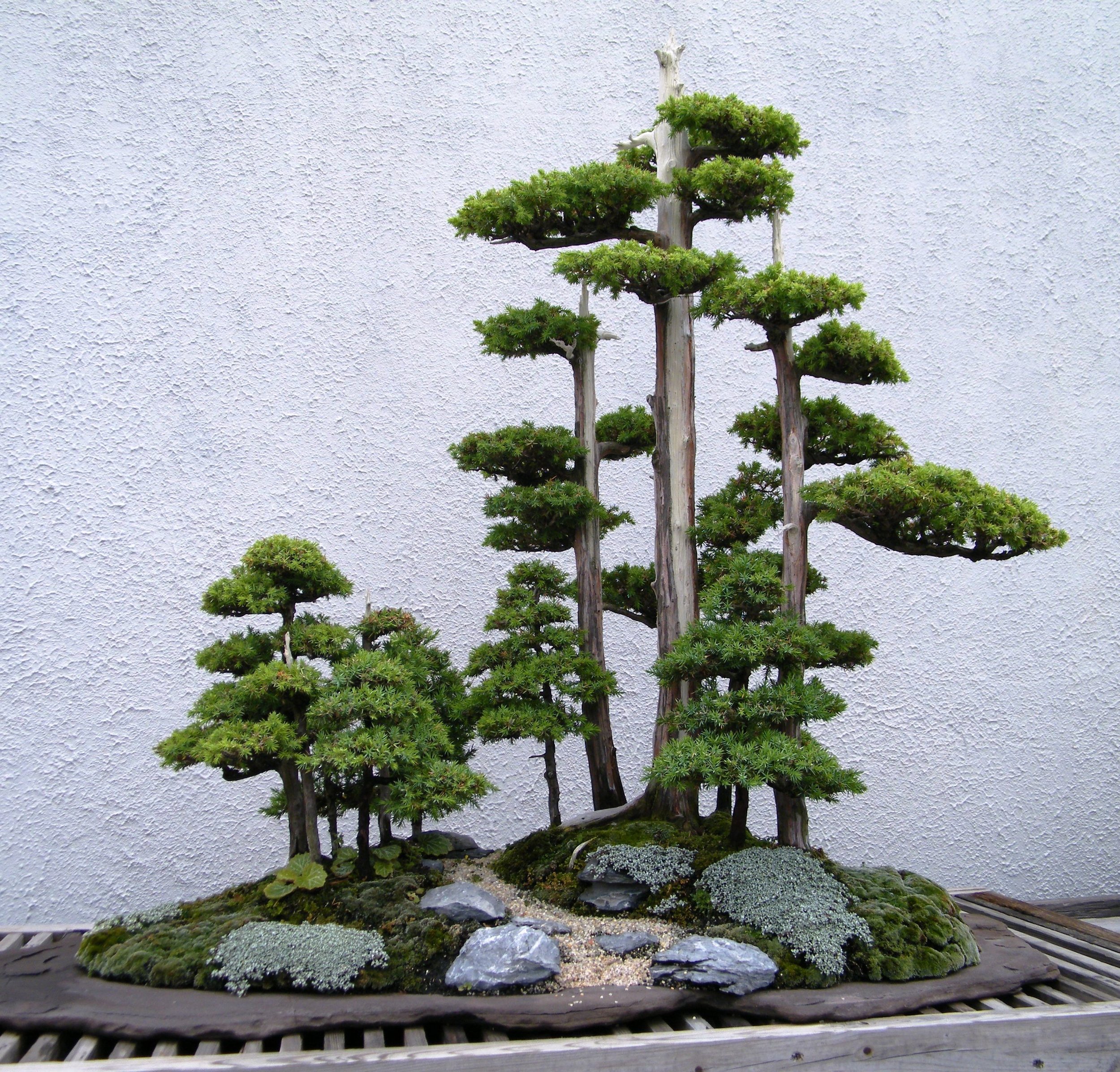 Now I've given my novel, Unsettled Between, to my agent, Allie Levick. I'm excited. Nervous, yes, but ultimately ready for the good things coming. Whether it's another round of revisions or steps toward acquisition, I'm grateful for the novel's transformation and it's becoming something unique and powerful. I reflect, now, on a year ago and remember how the novel was, thinking of the small growth and the subtle shifts. It has not only grown, but with expert hands my agent and I have shaped it into a very interesting story--so much so, this story is new in it's form and concept, allowing me to dream of the moment when I can announce, "This is a story that has never been told."
Now I've given my novel, Unsettled Between, to my agent, Allie Levick. I'm excited. Nervous, yes, but ultimately ready for the good things coming. Whether it's another round of revisions or steps toward acquisition, I'm grateful for the novel's transformation and it's becoming something unique and powerful. I reflect, now, on a year ago and remember how the novel was, thinking of the small growth and the subtle shifts. It has not only grown, but with expert hands my agent and I have shaped it into a very interesting story--so much so, this story is new in it's form and concept, allowing me to dream of the moment when I can announce, "This is a story that has never been told."
Support a Native owned Etsy shop, Allies United, where I offer unique merch for allies of social justice movements, like MMIW, Native Lives Matter and Black Lives Matter. Take a look inside my Etsy shop here: etsy.com/shop/AlliesUnited.
(Images borrowed from Pixabay.com, commons.wikimedia.org, and needpix.com)
Fourth Wall Subtleties as Tool for Liberation in Native American Context
Suppose you're at a coffee shop and you're telling your best friend about your workday. You're saying so-and-so is building a case to take to human resources and will file a lawsuit soon. So-and-so has evidence of coercion and retaliation. Maybe it's based on gender. Maybe it's based on race. So-and-so will also file with the Equal Employment Opportunity Commission as a federal employee complaint due to implicit biases at work. Then you notice someone at the next table staring and listening with interest at all the juicy details.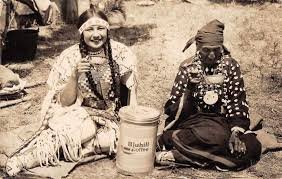 At this point you could choose to ignore the person and finish the story with your friend. But instead you acknowledge your listener by saying, "You should've been there," and then continue.Breaking the fourth wall is acknowledging the reader or disrupting the illusion of a fictional space. In post modernist literary terms it's called metafiction or authorial intrusion and meant to disrupt a structured order, especially one bent on maintaining hierarchies. Metafiction can happen in a variety of ways, such as an author inserting themselves into the story line or using a second person narrator or using a peripheral narrator who slips into the second person use of "you." The latter gives the audience the sense of listening over someone's shoulder, like the coffee shop scenario above.So why use this method? It's not common in literature. In fact, breaking the fourth wall is a stage or screen term and it happens in a movie when a character either looks at the camera or addresses the camera, meaning the audience.Many authors insert themselves into the story line and typically this is more of self congratulating behavior rather than having any real substance. In Bronte's Jane Eyre, she has Jane address the audience as a reaction to her loneliness. It enhances the story and character, as opposed to drawing attention to the author.As many of you know, I'm working through the final revisions of my novel. In this phase, I tend to contemplate anything and everything. I like to reason all the variables. Why I would approach a story a certain way. Or in this case: a novel.
At this point you could choose to ignore the person and finish the story with your friend. But instead you acknowledge your listener by saying, "You should've been there," and then continue.Breaking the fourth wall is acknowledging the reader or disrupting the illusion of a fictional space. In post modernist literary terms it's called metafiction or authorial intrusion and meant to disrupt a structured order, especially one bent on maintaining hierarchies. Metafiction can happen in a variety of ways, such as an author inserting themselves into the story line or using a second person narrator or using a peripheral narrator who slips into the second person use of "you." The latter gives the audience the sense of listening over someone's shoulder, like the coffee shop scenario above.So why use this method? It's not common in literature. In fact, breaking the fourth wall is a stage or screen term and it happens in a movie when a character either looks at the camera or addresses the camera, meaning the audience.Many authors insert themselves into the story line and typically this is more of self congratulating behavior rather than having any real substance. In Bronte's Jane Eyre, she has Jane address the audience as a reaction to her loneliness. It enhances the story and character, as opposed to drawing attention to the author.As many of you know, I'm working through the final revisions of my novel. In this phase, I tend to contemplate anything and everything. I like to reason all the variables. Why I would approach a story a certain way. Or in this case: a novel. As a Native American writer, it's especially important to have readers understand the Native world is not a fantasy world. It's real and filled with real consequences. I have to say this aloud because unfortunately many readers view our world as "romantic." Tragic, yes. But romantic. Meaning, Native lives are so far removed that many readers feel they can get lost among our pages in the same fashion as following around Frodo Baggins in the Lord of the Rings.
As a Native American writer, it's especially important to have readers understand the Native world is not a fantasy world. It's real and filled with real consequences. I have to say this aloud because unfortunately many readers view our world as "romantic." Tragic, yes. But romantic. Meaning, Native lives are so far removed that many readers feel they can get lost among our pages in the same fashion as following around Frodo Baggins in the Lord of the Rings.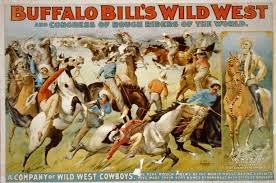 Ultimately, I insert myself into one of my story/chapters in order pull the reader out of the pages for a moment so as to consider these circumstances are not fantasy, but these types of things really happen in the Native world. Moreover, I harness the use of the "you" as a second person narrator addressing the main character so as to give the reader an opportunity to reflect on the character as potentially like themselves, where they have a short period of time where they get to "walk in his shoes." More or less, to humanize the character and allow the reader time to step back from their fantastical perspective.When you come from a world where colonization has transformed itself into distorting Native ideologies, you're going to want to help people understand it's not okay to romanticize us because it leads to exploitation. In that case, breaking the fourth wall or authorial intrusion becomes a tool for liberation.
Ultimately, I insert myself into one of my story/chapters in order pull the reader out of the pages for a moment so as to consider these circumstances are not fantasy, but these types of things really happen in the Native world. Moreover, I harness the use of the "you" as a second person narrator addressing the main character so as to give the reader an opportunity to reflect on the character as potentially like themselves, where they have a short period of time where they get to "walk in his shoes." More or less, to humanize the character and allow the reader time to step back from their fantastical perspective.When you come from a world where colonization has transformed itself into distorting Native ideologies, you're going to want to help people understand it's not okay to romanticize us because it leads to exploitation. In that case, breaking the fourth wall or authorial intrusion becomes a tool for liberation.
(Images were borrowed from Wikimedia, Wikipedia, and ferris.edu)
From the Edge of a Cliff to Under a Bus: Living Under the Dark Skinned Microscope
Have you ever felt like you were being watched? It's a creepy feeling. And then you look up to find someone staring. Your instincts picked up on the energy and you knew before looking that someone was watching you. When I encounter implicit bias, it has the same effect. I know when I'm being targeted with excess negative attention. I wonder why someone is so concerned about me in my life, when I have zero interest in theirs. The person comes off as creepy, and likely harbors underlying racist and sexist ideologies about dark skinned males.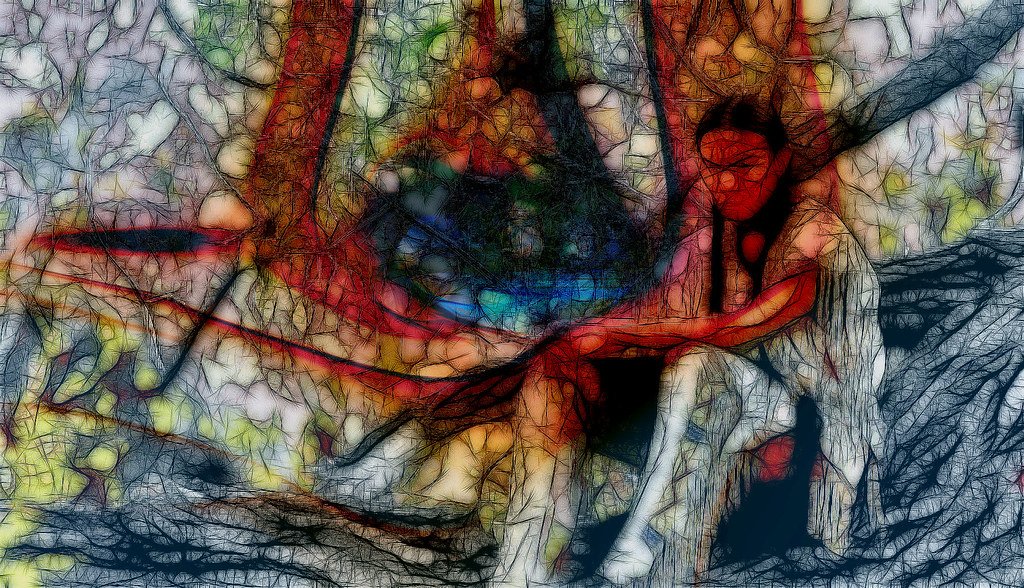 There are numerous articles on implicit bias so I'm not going into detail about how it works. The baseline: society, community, family low key trains us to look at individuals with biases. Dark skinned males are always assumed to be criminals so we are watched much closer. So much so, people keep watching until the slightest mistake occurs and then they attempt to blow it out of proportion. Fortunately, in my circumstances, the overreaction has been so blatantly noticeable it quickly becomes dismissible and the person looks like a psychopath.I'd like to write about the above mentioned pattern. This pattern isn't something typically covered by the "implicit bias" articles. It has to do with manifest destiny. Not the manifest destiny that came out of Europe centuries ago and massacred millions of Native Americans. But it is akin. If you believe it, it will come.What I've found in my personal life and work life are repeated, almost predictable, patterns where individuals will attempt to throw me under the bus. Meaning, they will find the smallest opportunity to try to get me in trouble with superiors. People believe dark skinned males to be criminal, but when we are more concerned with reading books rather than committing crimes then they subconsciously seek out ways to make us criminals.What happens? I have to stay within the lines more so than people around me. I can see people wasting entire days of time with school work or personal phone calls. But my entire day is tracked. I'll stand from my cubicle and someone will quickly ask, "Are you leaving?" I'll say, "No, I'm just going to the bathroom." If incidents like this happened in isolation, then I'd dismiss them. But I have consistently been asked arbitrary questions about what I'm doing. Then it's contrasted when no one else around me receives the same line of questioning. This has occurred throughout my entire working and academic career. Even my bathroom visits receive comments. I have to time my daily 15 minute breaks at work to be at the exact same time everyday, while other workers can spend hours gossiping. Those are just some examples of the many I face everyday when I walk out of my door.
There are numerous articles on implicit bias so I'm not going into detail about how it works. The baseline: society, community, family low key trains us to look at individuals with biases. Dark skinned males are always assumed to be criminals so we are watched much closer. So much so, people keep watching until the slightest mistake occurs and then they attempt to blow it out of proportion. Fortunately, in my circumstances, the overreaction has been so blatantly noticeable it quickly becomes dismissible and the person looks like a psychopath.I'd like to write about the above mentioned pattern. This pattern isn't something typically covered by the "implicit bias" articles. It has to do with manifest destiny. Not the manifest destiny that came out of Europe centuries ago and massacred millions of Native Americans. But it is akin. If you believe it, it will come.What I've found in my personal life and work life are repeated, almost predictable, patterns where individuals will attempt to throw me under the bus. Meaning, they will find the smallest opportunity to try to get me in trouble with superiors. People believe dark skinned males to be criminal, but when we are more concerned with reading books rather than committing crimes then they subconsciously seek out ways to make us criminals.What happens? I have to stay within the lines more so than people around me. I can see people wasting entire days of time with school work or personal phone calls. But my entire day is tracked. I'll stand from my cubicle and someone will quickly ask, "Are you leaving?" I'll say, "No, I'm just going to the bathroom." If incidents like this happened in isolation, then I'd dismiss them. But I have consistently been asked arbitrary questions about what I'm doing. Then it's contrasted when no one else around me receives the same line of questioning. This has occurred throughout my entire working and academic career. Even my bathroom visits receive comments. I have to time my daily 15 minute breaks at work to be at the exact same time everyday, while other workers can spend hours gossiping. Those are just some examples of the many I face everyday when I walk out of my door.
It has to do with manifest destiny. Not the manifest destiny that came out of Europe centuries ago and massacred millions of Native Americans. But it is akin. If you believe it, it will come.
Ultimately, it has given me a stronger work ethic. When everyone is trying to turn you into something you're not, you become more of who you really are. I'm a work horse. Dependable. And focused. I show up for my kids. I'm proud to be a nurturing father. At the end of the day, my children and my family are the reasons I stay the course. Implicit bias isn't going fade away because we are aware. Most institutions where I've worked and attended for my education have trained staff and students on implicit bias. For a few months afterwards, I get less monitoring and harassment. But after time passes, it always starts back up again. Like taking care of my family isn't enough, I also get the pleasure of walking the edges of a cliff.
Real Life Turns Into Fiction
I've said this before: If you don't want to be villain in fiction then don't be one in real life. The beautiful thing about graduating from two different writing programs are the connections made between creative writers and journalists. We tend to be tasked with a similar challenge. How to captivate an audience.Twitter can be a great place for inspiration. I haven't posted on my blog in a while. I apologize. Since signing with my literary agent, I've been busy meeting deadlines and tightening up my novel-in-collection, Unsettled Between. A great opportunity has landed in my lap so I've thrown myself into the writing. I expect to achieve a great work of fiction and I'm excited for audiences to engage in the material.I was on Twitter last night and there was a small exchange. It was about personal histories laced into the writing of fiction. I draw from real life. It's been odd how very clear storylines play out in my personal life. Maybe it's my lens. I'm a writer. I see story everywhere I look. But when a clearly defined villain oppresses people in a certain environment, it's hard to ignore, and then the little minions enslaved by these oppressors add interesting subplots. Soon I have an entire novel's worth of fiction to write.I could go on my social media and blast people (we see that often), but I find it more beneficial to mold those personal experiences into a storyline and package it in a way that is entertaining, and available for audiences to reflect.You must realize something about artists: our only loyalty is to the well being of the community. We are guided by tribal justice. The main component for tribal justice? To put everything out in front of the public, make everyone aware of the problem, let the community's judgement become the justice. Similarly, this is the task of journalists as well. Zitkala Sa wrote a story, The Trial Path, where a young man had to face the judgement of his community, and every time I think of my obligation as a writer I think of this story.We have several platforms, but the one most powerful is the one that becomes a part of a continuing literature situated in a historical dialogue. Those who are interested in a legacy should be especially aware that intelligent people can discern the fleeting methods from the ones that stick around for a generation.
Zitkala Sa wrote a story, The Trial Path, where a young man had to face the judgement of his community, and every time I think of my obligation as a writer I think of this story.We have several platforms, but the one most powerful is the one that becomes a part of a continuing literature situated in a historical dialogue. Those who are interested in a legacy should be especially aware that intelligent people can discern the fleeting methods from the ones that stick around for a generation.
Support a Native owned Etsy shop, Allies United, where I offer unique merch for allies of social justice movements, like MMIW, Native Lives Matter and Black Lives Matter. Take a look inside my Etsy shop here: etsy.com/shop/AlliesUnited.
(The image was borrowed from wikimedia commons)
Twitter Serves Minority Writers: Intro to New Agent & #DVpit Success
Metaphorically #DVpit becomes water. Likewise, I could say Twitter is some type of container--a canteen maybe--something tethered to your belt. Whether you've been slinging a sledge hammer to break rocks or ripping callouses off your hands for grip on a climb, you're exhausted and you could use a drink. What you need is opportunity and energy to keep climbing, to keep breaking those rocks.I've said this a number of times on my blog. One of the biggest obstacles for minority writers is opportunity. There can be a number of reasons why you might not see much diversity at your writer's conference. Questions race through our minds. Where am I going to get the resources to attend? Who's going to take care of my kids? Will I lose my job? How will I pay my bills? And those are only a few of the questions. Economic disparity for minorities is not a new topic. It's easy to see how avenues for success can close down for a minority writer seeking to give voice to the voiceless, to represent her community in a genuine way.Little did I know #DVpit would be an environment for such opportunity. I read their website (www.dvpit.com) and I jumped onto their Twitter (@DVpit_). I understood the concept and was hopeful. The event was started by Beth Phelan and what grabbed me was the description:
"#DVpit is a Twitter event created to showcase pitches from marginalized voices that have been historically underrepresented in publishing. This includes (but is not limited to): Native peoples and people of color; people living and/or born/raised in underrepresented cultures and countries; disabled persons (including neurodiverse); people living with illness; people on marginalized ends of the socioeconomic, cultural and/or religious spectrum; people identifying within LGBTQIA+; and more." -- Beth Phelan.
After reading the description, I marked it on my calendar and started to prepare my pitch. I wasn't sure of what was to come of this "Diverse Voices Pitch" event, aka #DVpit, but I knew I had to try. What happened was this: I started to get "likes" or clicks which are hearts on Twitter. This is a good sign because a "like" means, "Hey, send me a query; I like what you're writing." So that's what I did. I had five agents click so I sent out five queries and I received five requests for manuscripts (two full and three partial). All five were from large literary agencies in New York and California. Oddly enough two of the agents were from the same agency so they worked out who would read the manuscript.Long story short, I signed with an agent. It took one week to filter through the process, and when I had to pull my submissions with the other agents they emailed back saying their congratulations. One of the agents read the full manuscript even though she wouldn't be representing the novel. She was very kind and generous with her compliments. I am completely humbled by it all.In this, I must give a big thank you to Beth Phelan for creating a space where minorities can navigate environments they might not otherwise be able. I highly recommend minority writers to seek out #DVpit for 2019. After looking into this event I also ran across other Twitter events which offer similar opportunities for writers, like #Pitmad, #PitchWars, #PitDark, and #PBPitch. I recommend writers to look into which pitching event fits your genre and participate. Take the time to develop your pitch, as well as your book (the market is still competitive and there is no guarantee).I've saved the best for last: I'm proud to announce I'm rep'd by Allie Levick of Writers House Literary Agency. I can't say enough about how excited I am. My palms have ripped through callouses getting to the next hold, and having Allie on my side makes me optimistic about the next climb. She is now representing my novel, UNSETTLED BETWEEN. You can find her via the Writers House website, www.writershouse.com, her personal website, www.alexandralevick.com, or her Twitter, @AllieLevick.
What happened was this: I started to get "likes" or clicks which are hearts on Twitter. This is a good sign because a "like" means, "Hey, send me a query; I like what you're writing." So that's what I did. I had five agents click so I sent out five queries and I received five requests for manuscripts (two full and three partial). All five were from large literary agencies in New York and California. Oddly enough two of the agents were from the same agency so they worked out who would read the manuscript.Long story short, I signed with an agent. It took one week to filter through the process, and when I had to pull my submissions with the other agents they emailed back saying their congratulations. One of the agents read the full manuscript even though she wouldn't be representing the novel. She was very kind and generous with her compliments. I am completely humbled by it all.In this, I must give a big thank you to Beth Phelan for creating a space where minorities can navigate environments they might not otherwise be able. I highly recommend minority writers to seek out #DVpit for 2019. After looking into this event I also ran across other Twitter events which offer similar opportunities for writers, like #Pitmad, #PitchWars, #PitDark, and #PBPitch. I recommend writers to look into which pitching event fits your genre and participate. Take the time to develop your pitch, as well as your book (the market is still competitive and there is no guarantee).I've saved the best for last: I'm proud to announce I'm rep'd by Allie Levick of Writers House Literary Agency. I can't say enough about how excited I am. My palms have ripped through callouses getting to the next hold, and having Allie on my side makes me optimistic about the next climb. She is now representing my novel, UNSETTLED BETWEEN. You can find her via the Writers House website, www.writershouse.com, her personal website, www.alexandralevick.com, or her Twitter, @AllieLevick.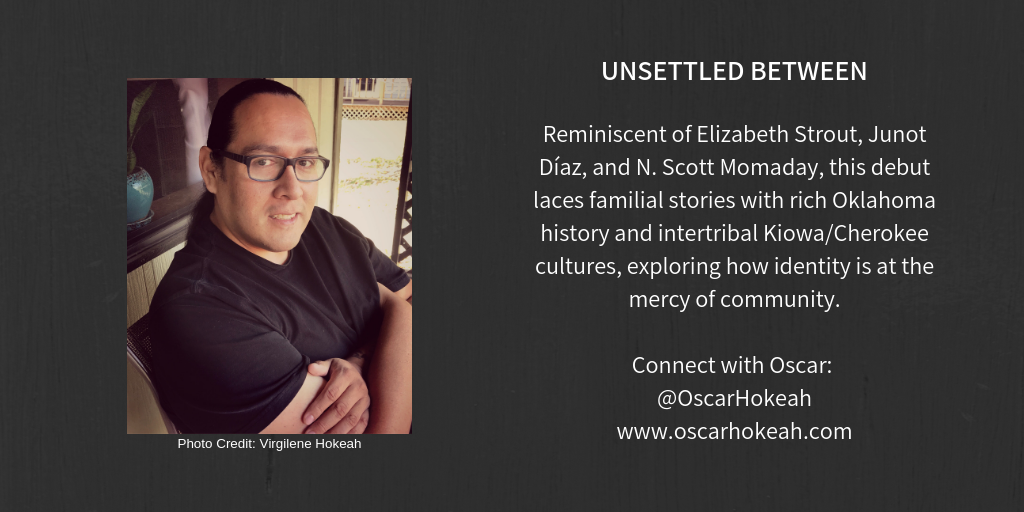
Reductive Discernment Between the Crabs in the Barrel and Fake In'dins
You've done the work. Wrote the story, painted the painting, soldered the jewelry, sculpted the clay, or weaved the basket. You've put in the hours at the workstation, lost yourself in the art, creating work unique and powerful and meant to contribute to a collective of voices echoing from generations past. Then you take the work into the world. Now it's time to dance with the "crabs in the barrel" and the "fake In'dins." It's a miracle when an artist makes it. So much so we have to celebrate each time it occurs. Just to sit back and think of all the obstacles that individual had to navigate to be successful is worth the admiration.Those of you who have consistently followed my blog and contributed in length to discussions are in for a ride. I'm going to give you a little insight into the Native art world. And some of it will sound familiar to your own circumstances, and then some of it you're going to scratch your head and try to figure out how and why.I've been in these circles a long time. I graduated with a Bachelors of Fine Arts in Creative Writing from the only Native Arts college in existence. The Institute of American Indian Arts is a unique institution which focuses on contemporary Native arts and is located in Santa Fe, New Mexico. It's churned out some of the greatest Native artists in the world. I'm lucky and grateful to have developed myself among so many Native intellectuals and artisans.To a certain extent, we were sheltered from a predatory art world. Maybe we needed to be sheltered so as to properly develop ourselves. I can see many strengths to developing in an isolated group of artists, so as to hone our skills before hitting a market that's symptomatic of pitfalls.Once we step into the arena, we encounter first the "crabs in the barrel," who are bent on never seeing another Native do well. This is the Natives against Natives idiocy that plays out. Instead of celebrating the talent of our fellow Natives, we are intimidated so we attack. We tear down those Natives around us, and the more talented or motivated the harder the attack. We can go after heritage association, by "How much In'din are you?," or "What family do you belong to?" And if that doesn't work, then we'll go after participation, as in "Do you even speak your language?" or "Have you been to a stomp dance?" We desperately reach and grab into the darkness for any and all cultural knowledge to weaponize and utilize to attack a fellow Native artist.
It's a miracle when an artist makes it. So much so we have to celebrate each time it occurs. Just to sit back and think of all the obstacles that individual had to navigate to be successful is worth the admiration.Those of you who have consistently followed my blog and contributed in length to discussions are in for a ride. I'm going to give you a little insight into the Native art world. And some of it will sound familiar to your own circumstances, and then some of it you're going to scratch your head and try to figure out how and why.I've been in these circles a long time. I graduated with a Bachelors of Fine Arts in Creative Writing from the only Native Arts college in existence. The Institute of American Indian Arts is a unique institution which focuses on contemporary Native arts and is located in Santa Fe, New Mexico. It's churned out some of the greatest Native artists in the world. I'm lucky and grateful to have developed myself among so many Native intellectuals and artisans.To a certain extent, we were sheltered from a predatory art world. Maybe we needed to be sheltered so as to properly develop ourselves. I can see many strengths to developing in an isolated group of artists, so as to hone our skills before hitting a market that's symptomatic of pitfalls.Once we step into the arena, we encounter first the "crabs in the barrel," who are bent on never seeing another Native do well. This is the Natives against Natives idiocy that plays out. Instead of celebrating the talent of our fellow Natives, we are intimidated so we attack. We tear down those Natives around us, and the more talented or motivated the harder the attack. We can go after heritage association, by "How much In'din are you?," or "What family do you belong to?" And if that doesn't work, then we'll go after participation, as in "Do you even speak your language?" or "Have you been to a stomp dance?" We desperately reach and grab into the darkness for any and all cultural knowledge to weaponize and utilize to attack a fellow Native artist.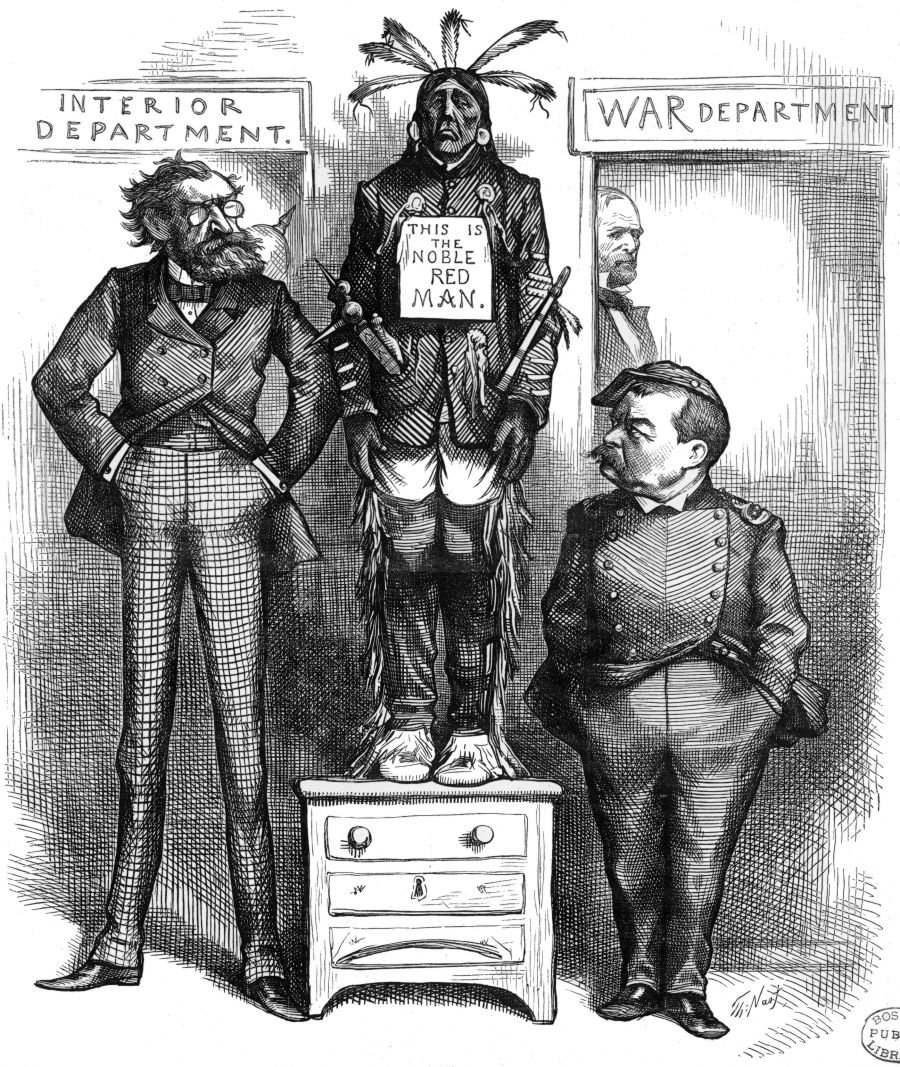 Then we have the "fake In'dins," who slither into our circles with false promises and outright lies. When I was at IAIA the first among this group I crossed was the infamous Joseph Boyden, who we all thought was Ojibwa, and nobody either knew otherwise or didn't tell us students otherwise. He certainly didn't tell us students otherwise. So where was his ethos? I assumed, "Hey, he's at a famous Native arts college and he's writing about Ojibwas, so he must be Ojibwa." IAIA wouldn't bring in a fake In'din? He was visiting the school and spent about a week on and off campus promoting his book. Then we find out he's not Native at all and he's won the Canadian equivalent of the Pulitzer Prize. More or less, he's taken an award out of a Canadian Native writer's hands.But what makes the situation hard for new and upcoming Native artists are the "fake In'dins" swimming in the shallows near the shore. When we first step into the real world arena, we often meet people, artists, who we can bond with because they are in the same boat--navigating the Native art scene. We believe they are Native because they say they are Native, and then at some point (often years down the line) we find out they are not Native at all. They have Native blood in their lineage but cannot prove it. Which in and of itself is fine, but if you are trying to capitalize off of it and put out what is to be considered "Native Art" then you are stealing from community born and raised Natives--stealing space, stealing awards, stealing time, stealing success. But we've seen this stealing before. It has been a consistent part of Native American history. It's adapted and changed faces, but it's all the same, and unfortunately we Natives must roll our eyes and say to ourselves, "Here we go again."Getting hit on both sides of the drum, a Native artist starts to see the "crabs in the barrel" and the "fake In'dins" as serving the same God. Ultimately they both keep down Native people. In a world that's already designed to suppress Native voices it makes it doubly difficult when the deception is woven with falsity and nicety. When fake In'dins try to butter you up with false promises--similar to what our ancestors encountered in the past--and crabs in the barrel who jump on our back to try and destroy any chance we have for success (while in the process attempting to gain success for themselves).Now tell me there's a difference.
Then we have the "fake In'dins," who slither into our circles with false promises and outright lies. When I was at IAIA the first among this group I crossed was the infamous Joseph Boyden, who we all thought was Ojibwa, and nobody either knew otherwise or didn't tell us students otherwise. He certainly didn't tell us students otherwise. So where was his ethos? I assumed, "Hey, he's at a famous Native arts college and he's writing about Ojibwas, so he must be Ojibwa." IAIA wouldn't bring in a fake In'din? He was visiting the school and spent about a week on and off campus promoting his book. Then we find out he's not Native at all and he's won the Canadian equivalent of the Pulitzer Prize. More or less, he's taken an award out of a Canadian Native writer's hands.But what makes the situation hard for new and upcoming Native artists are the "fake In'dins" swimming in the shallows near the shore. When we first step into the real world arena, we often meet people, artists, who we can bond with because they are in the same boat--navigating the Native art scene. We believe they are Native because they say they are Native, and then at some point (often years down the line) we find out they are not Native at all. They have Native blood in their lineage but cannot prove it. Which in and of itself is fine, but if you are trying to capitalize off of it and put out what is to be considered "Native Art" then you are stealing from community born and raised Natives--stealing space, stealing awards, stealing time, stealing success. But we've seen this stealing before. It has been a consistent part of Native American history. It's adapted and changed faces, but it's all the same, and unfortunately we Natives must roll our eyes and say to ourselves, "Here we go again."Getting hit on both sides of the drum, a Native artist starts to see the "crabs in the barrel" and the "fake In'dins" as serving the same God. Ultimately they both keep down Native people. In a world that's already designed to suppress Native voices it makes it doubly difficult when the deception is woven with falsity and nicety. When fake In'dins try to butter you up with false promises--similar to what our ancestors encountered in the past--and crabs in the barrel who jump on our back to try and destroy any chance we have for success (while in the process attempting to gain success for themselves).Now tell me there's a difference.
(Images used in this post were borrowed from Wikimedia Commons)
Native American Cuisine in Kiowa Literary Thematics
Exploring culture through foods is nothing new to the literary world. Likewise, it's not new to Native American literature. While we in the literary field know this to be true there is still very little exploration of the topic in thematic terms. How can traditional food and customs associated with consumption of those foods enhance the greater theme of a piece?Those of you reading this post to learn how to make Native American food may be asking, "What is Native American cuisine?" You'll have to search a little further to find out details on cooking Native American food, but I'll give you a little sample of what may constitute Native American cuisine in this article. For further elaboration on the topic of Native American cuisine check out: Foods of the Southwest Indian Nations by Lois Ellen Frank. She taught my ethnobotany course at the Institute of American Indian Arts and knows what she's talking about. Plus she's Kiowa so that puts her on my radar. There are a host of other options you can find on Amazon as well. Diabetes is a serious issue among Native peoples so I'm going to link a vital source for healthy eating here: Click Here!Back when I was a young guy "tearing it" on the Southern Plains of Oklahoma meatpies were indicative of KCA culture (Kiowa, Comanche, and Apache). It was a localized food specific to a certain geographic area. Today, using meatpies as a Kiowa artist, it can be applied for generational specificity in that it "was" localized, and now tribes across Oklahoma and other parts of Native America have latched onto it as a "cultural food." Living in Tahlequah today I've found many Cherokees making meatpies, but when I was growing up in Tahlequah as a child meatpies weren't in the community so I would dream of trips back to Lawton, Oklahoma (KCA country) where I could get my hands on a meatpie. Oh, the diaspora!![]() In my short story, Our Dance, you'll find in the second paragraph of the story the narrator describe receiving his Kiowa per cap, his ahongiah, (which was federally dispersed money where the Kiowa tribe allocated a financial disbursement between all tribal members), as "we both tore into those envelopes faster than the last meatpie on a plate." In the juxtaposition of receiving money alongside a cultural food like meatpies, we deduce the equal desperation in which both were acquired, and how each--meatpie and money--have become an appropriated substance for cultural survival.Meatpies are made from the combination of fry bread and meat. More or less a meat-stuffed piece of fry bread. Fry bread is commonly understood as a cultural food, but it's not traditional, meaning our ancestors didn't make fry bread prior to contact by Western peoples. It became a consistent part of our cultural foods when the U.S. government distributed food rations to tribes (we commonly refer to them as commodities or "commods" for slang). Because meatpies are basically fry bread with meat inside, they have also become a survival food for Kiowa, Comanche, and Apache people in southern Oklahoma (further out now due to diasporic conditions).When the narrator of my story, Our Dance, describes going for money the same as going for "the last meatpie on the plate," it speaks to the creative and critical thinking skills applied by Kiowa people to take something and appropriate it for cultural survival. In essence the story's title, Our Dance, is the dance of survival, like meatpies, like receiving per cap, like bonding with the community. To further connect this thematic for the reader, the quote at the onset of the story by James Auchiah, “Kiowa Five” artist (now Kiowa Six) and Chief Satanta’s grandson, reads, “We Kiowa are old, but we dance.” It is the dance of survival beginning with the narrator's ancestors and carrying into his present community which dictates his use of cultural foods for survival, and subsequently my use of culture, food, and customs to connect the thematic dots for my readers.
In my short story, Our Dance, you'll find in the second paragraph of the story the narrator describe receiving his Kiowa per cap, his ahongiah, (which was federally dispersed money where the Kiowa tribe allocated a financial disbursement between all tribal members), as "we both tore into those envelopes faster than the last meatpie on a plate." In the juxtaposition of receiving money alongside a cultural food like meatpies, we deduce the equal desperation in which both were acquired, and how each--meatpie and money--have become an appropriated substance for cultural survival.Meatpies are made from the combination of fry bread and meat. More or less a meat-stuffed piece of fry bread. Fry bread is commonly understood as a cultural food, but it's not traditional, meaning our ancestors didn't make fry bread prior to contact by Western peoples. It became a consistent part of our cultural foods when the U.S. government distributed food rations to tribes (we commonly refer to them as commodities or "commods" for slang). Because meatpies are basically fry bread with meat inside, they have also become a survival food for Kiowa, Comanche, and Apache people in southern Oklahoma (further out now due to diasporic conditions).When the narrator of my story, Our Dance, describes going for money the same as going for "the last meatpie on the plate," it speaks to the creative and critical thinking skills applied by Kiowa people to take something and appropriate it for cultural survival. In essence the story's title, Our Dance, is the dance of survival, like meatpies, like receiving per cap, like bonding with the community. To further connect this thematic for the reader, the quote at the onset of the story by James Auchiah, “Kiowa Five” artist (now Kiowa Six) and Chief Satanta’s grandson, reads, “We Kiowa are old, but we dance.” It is the dance of survival beginning with the narrator's ancestors and carrying into his present community which dictates his use of cultural foods for survival, and subsequently my use of culture, food, and customs to connect the thematic dots for my readers.